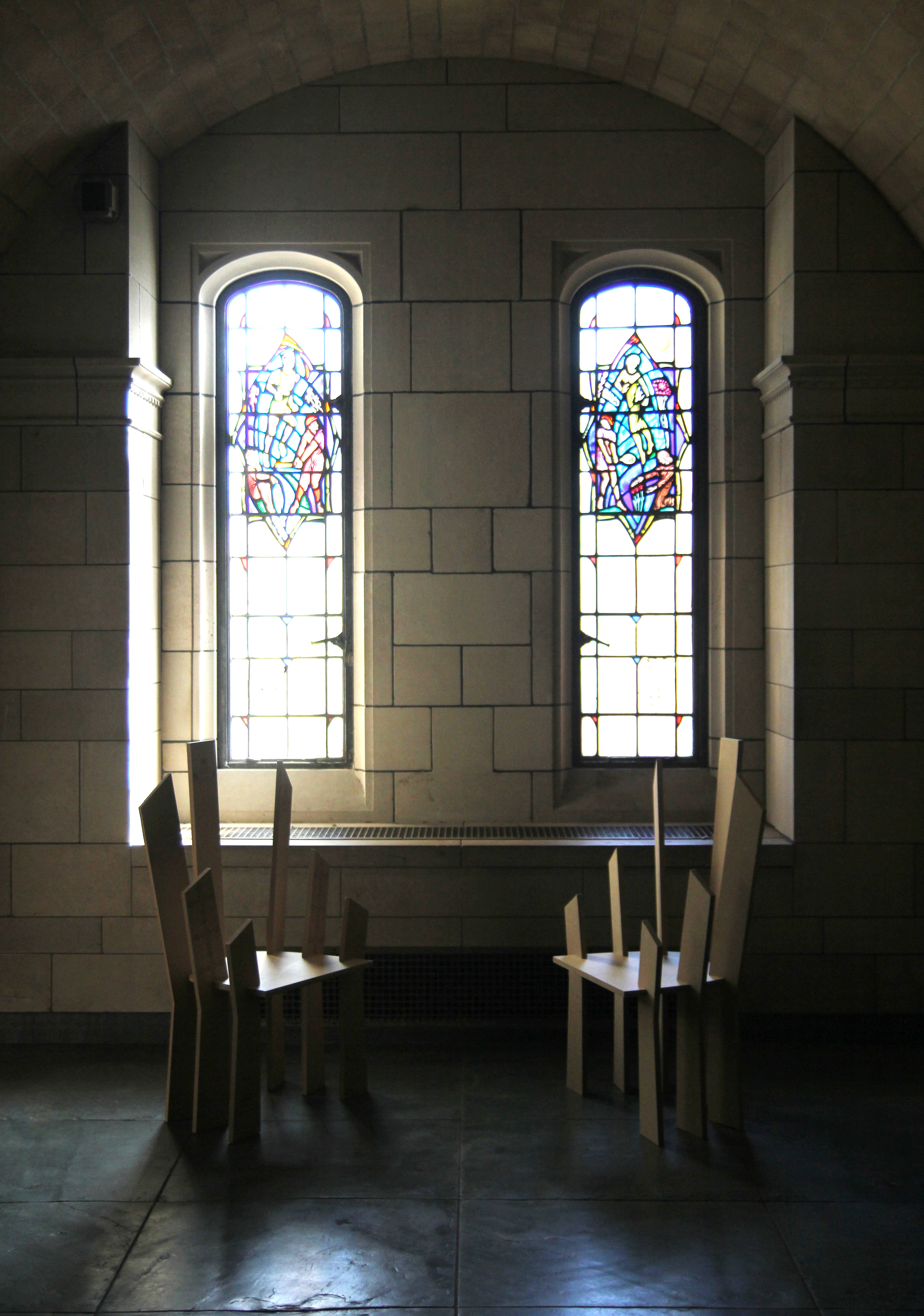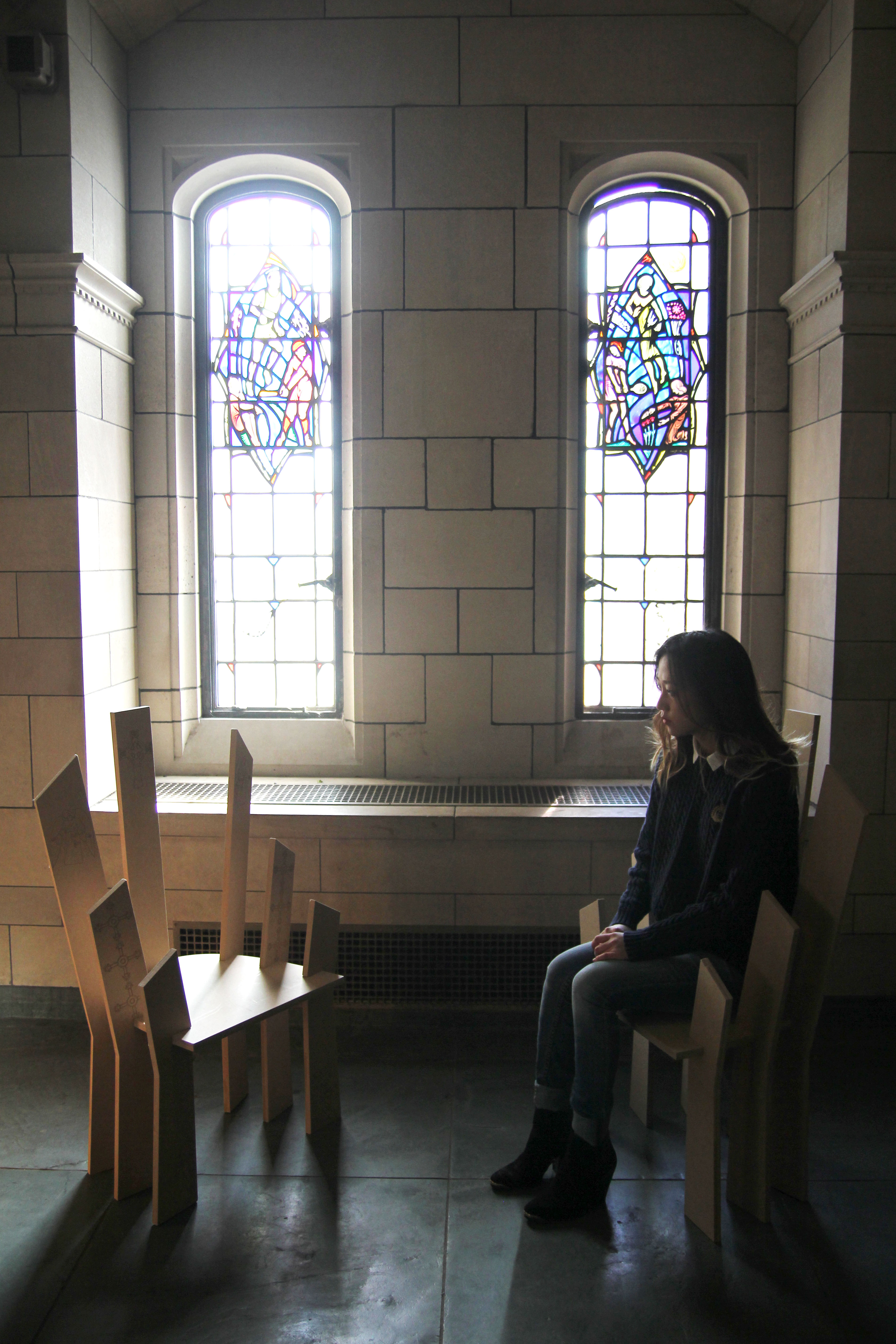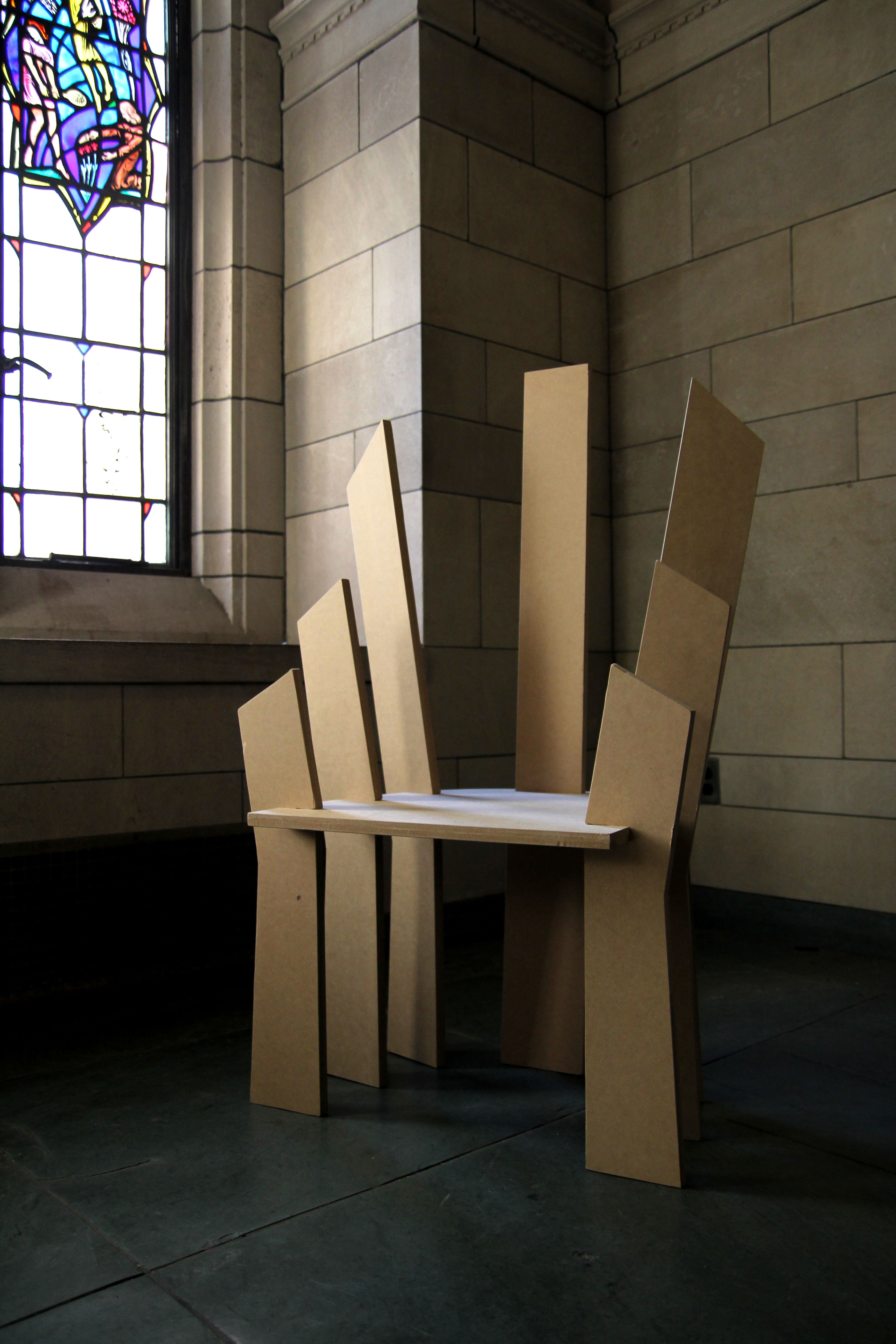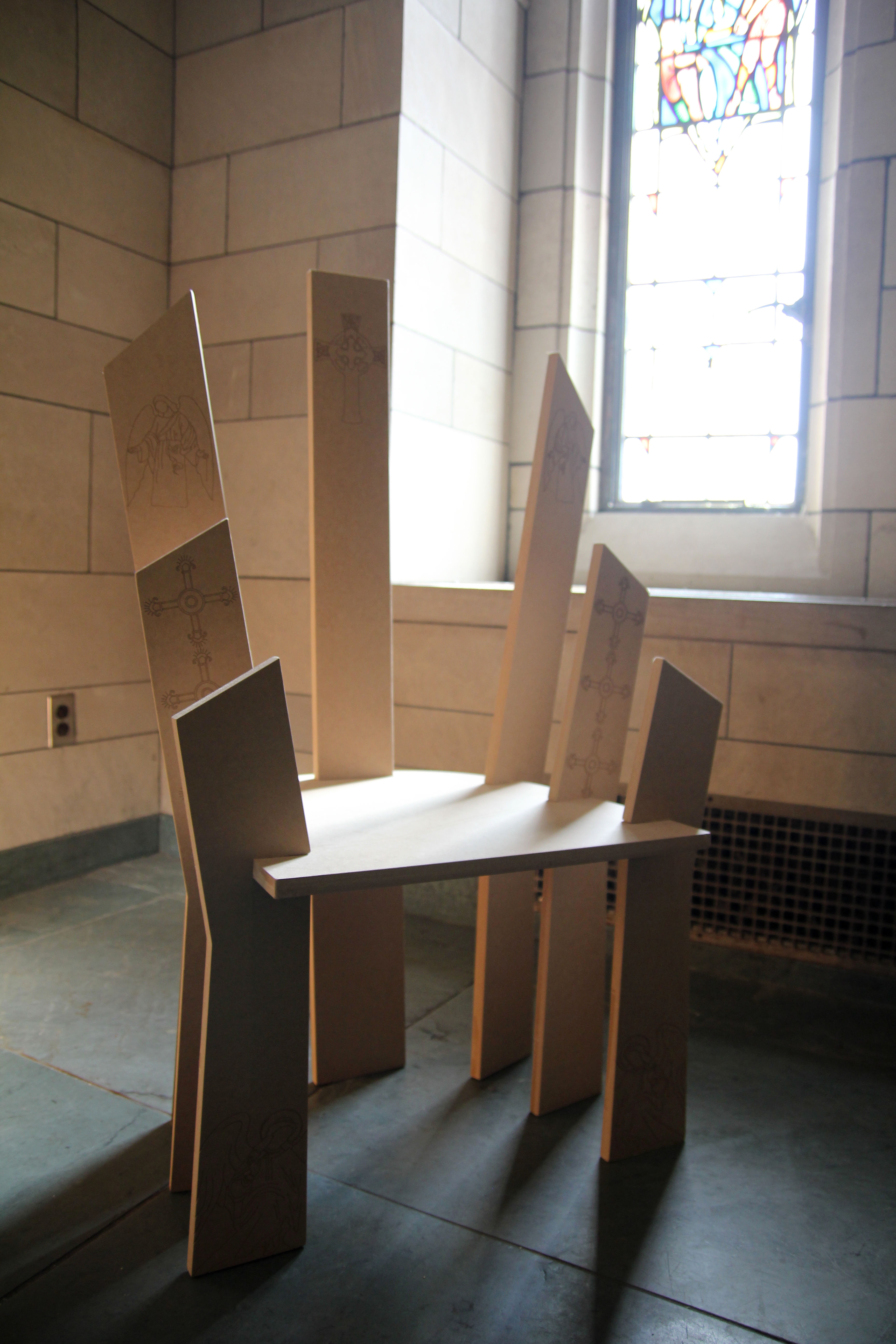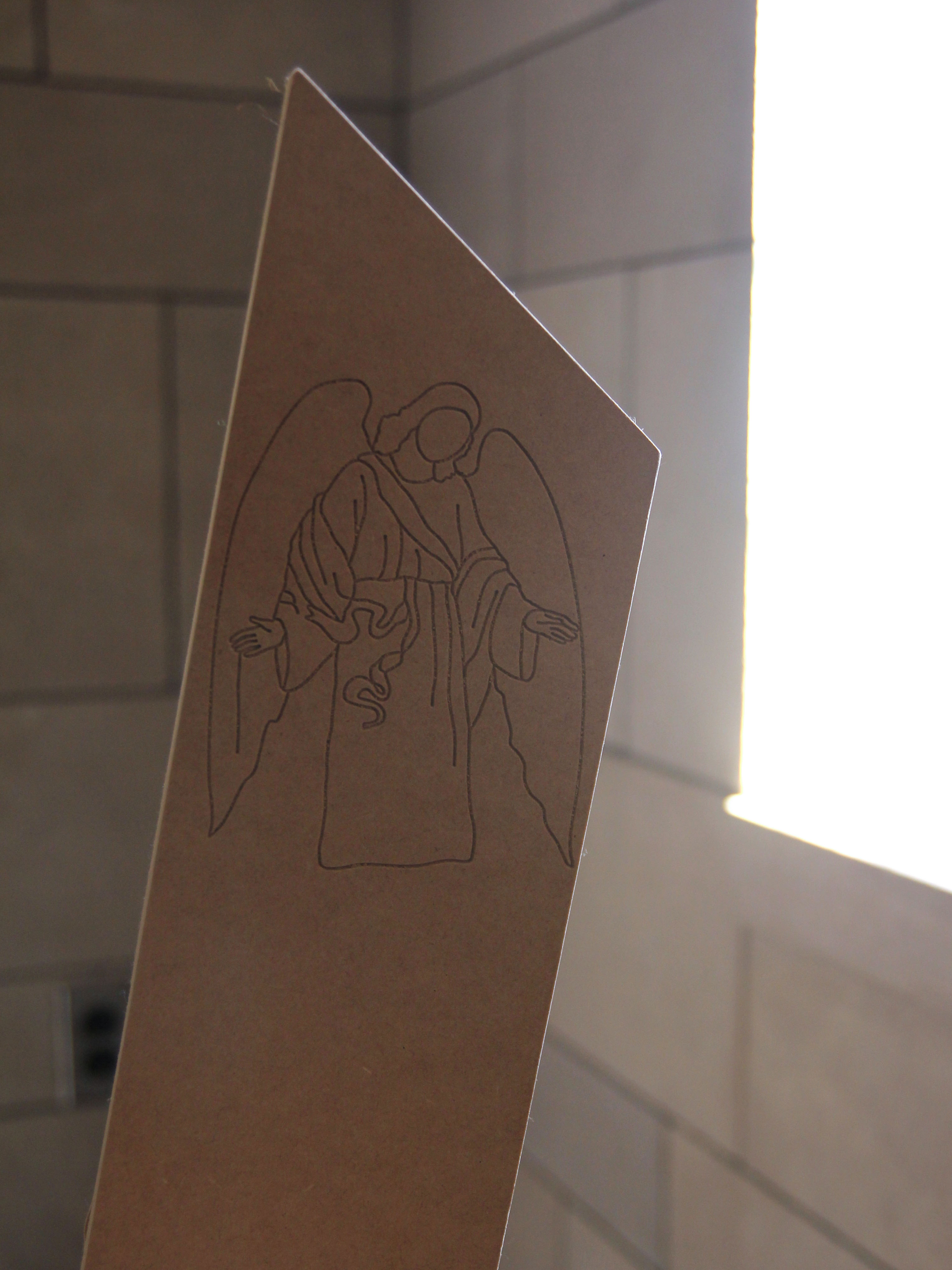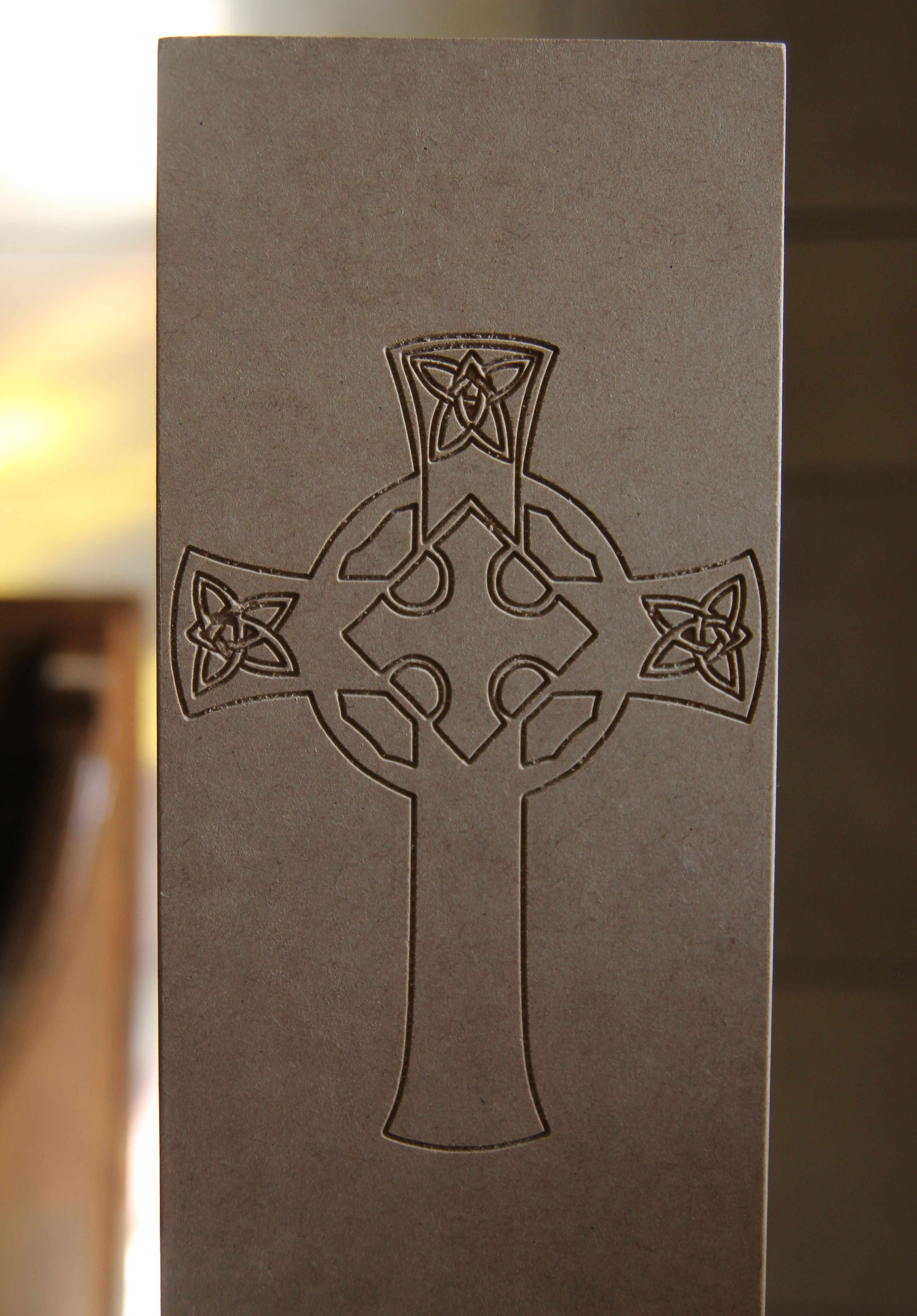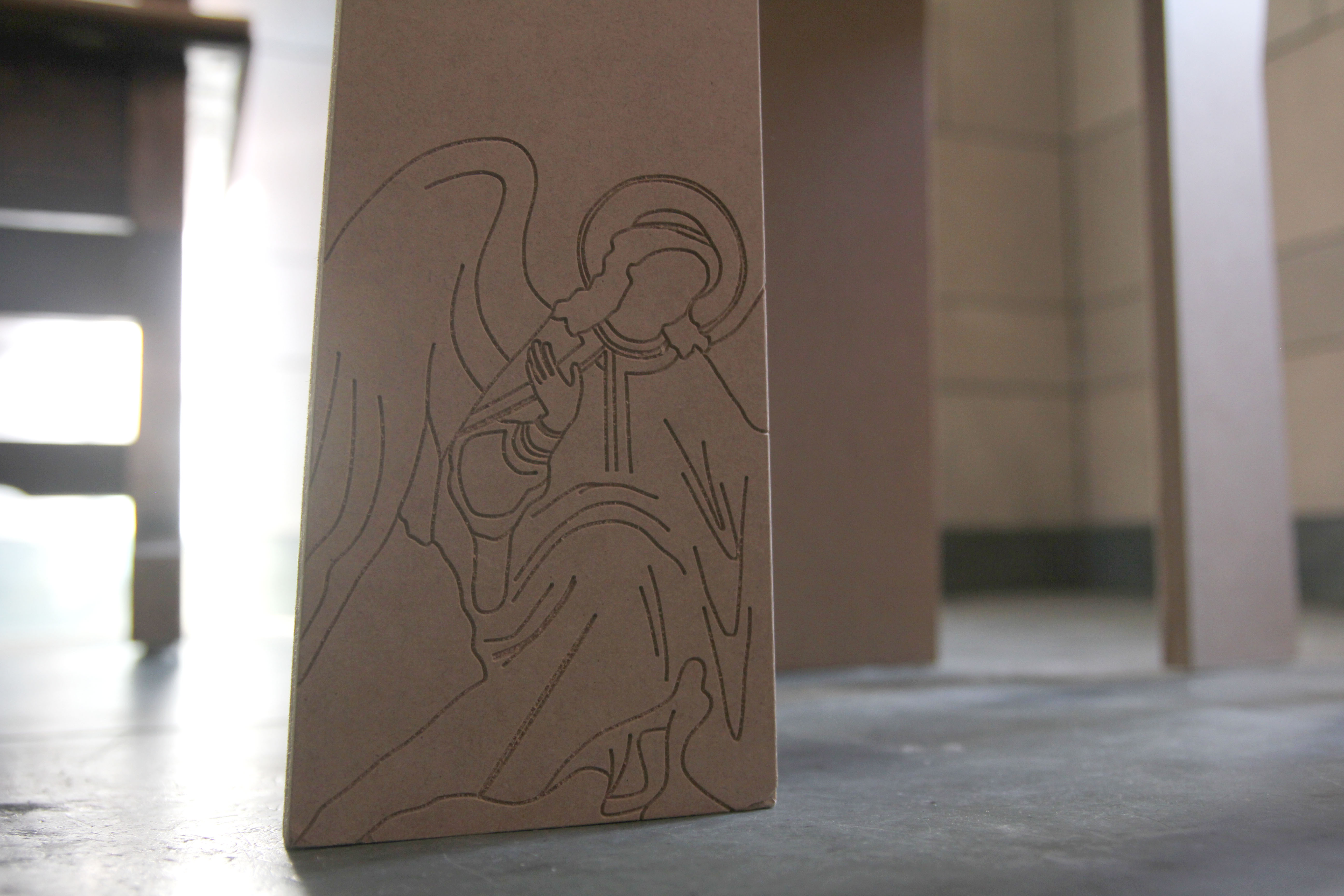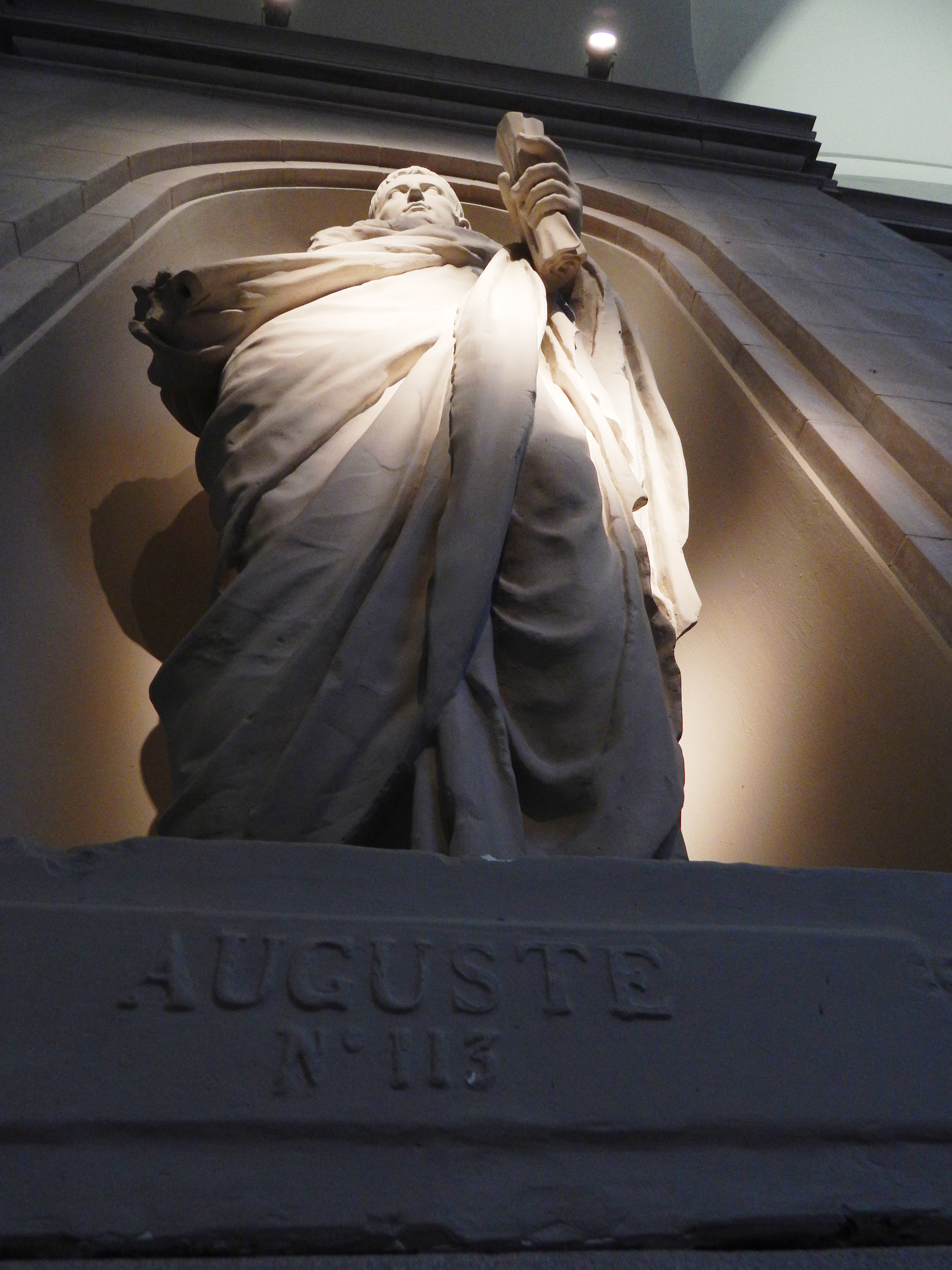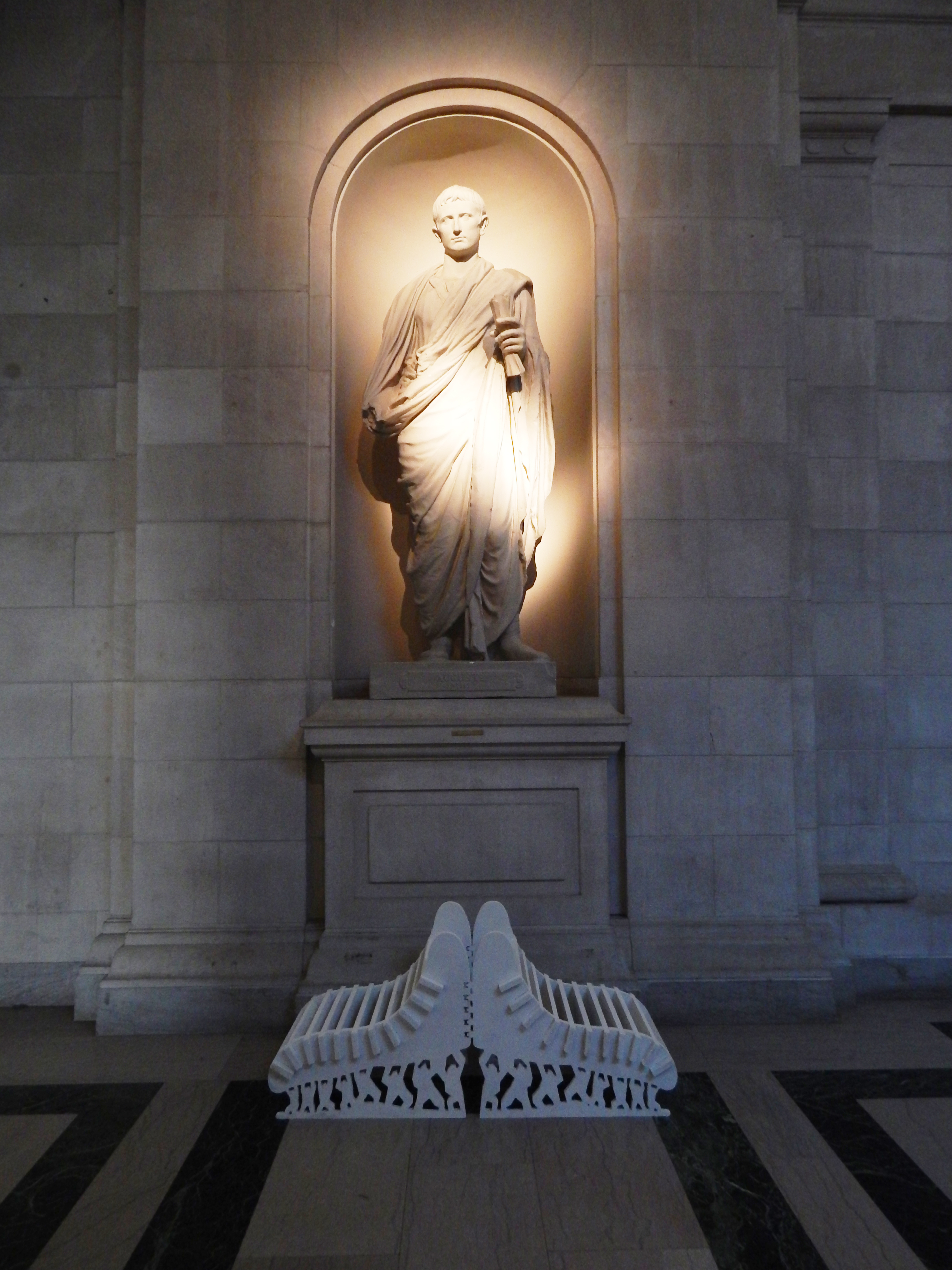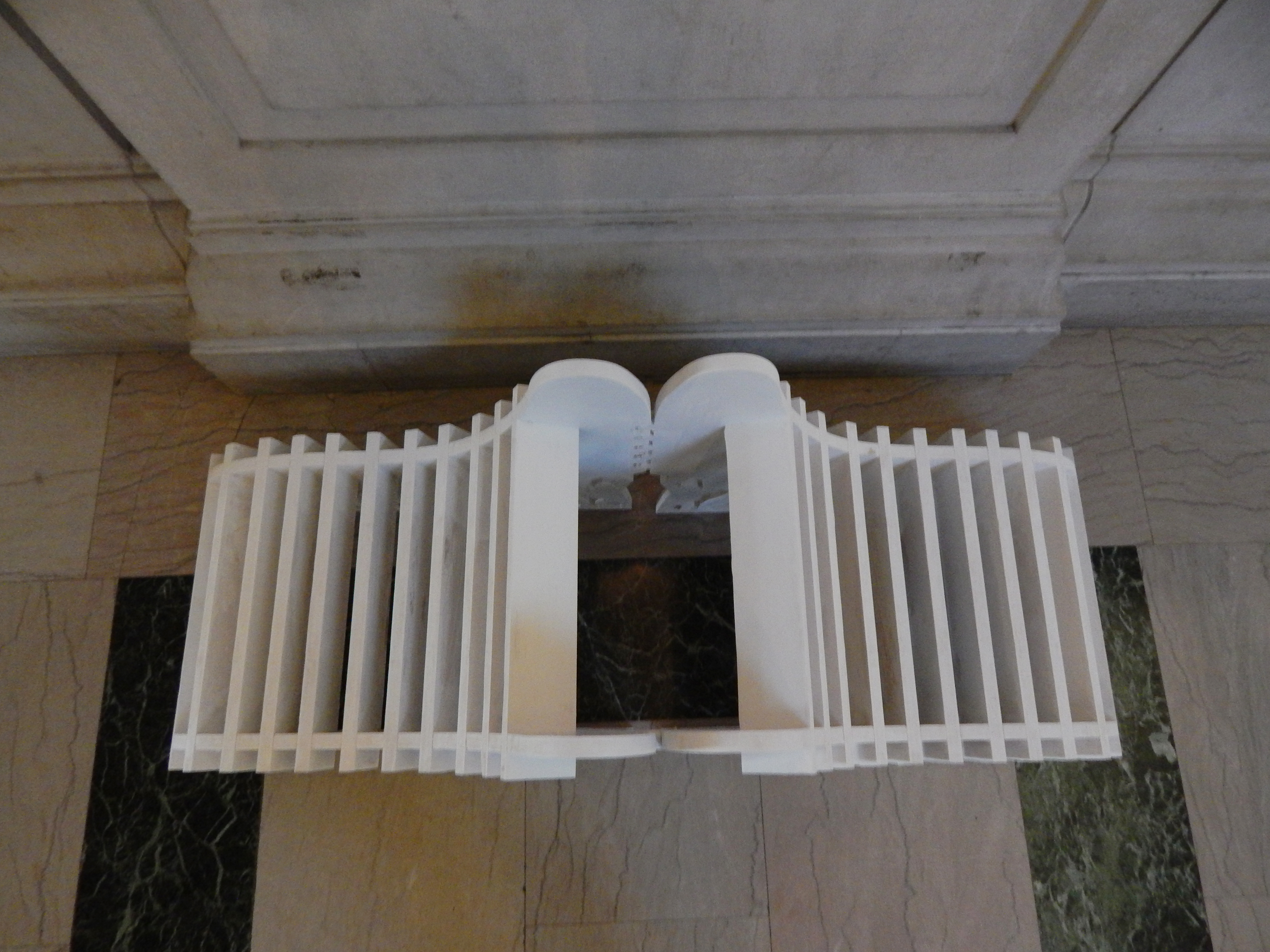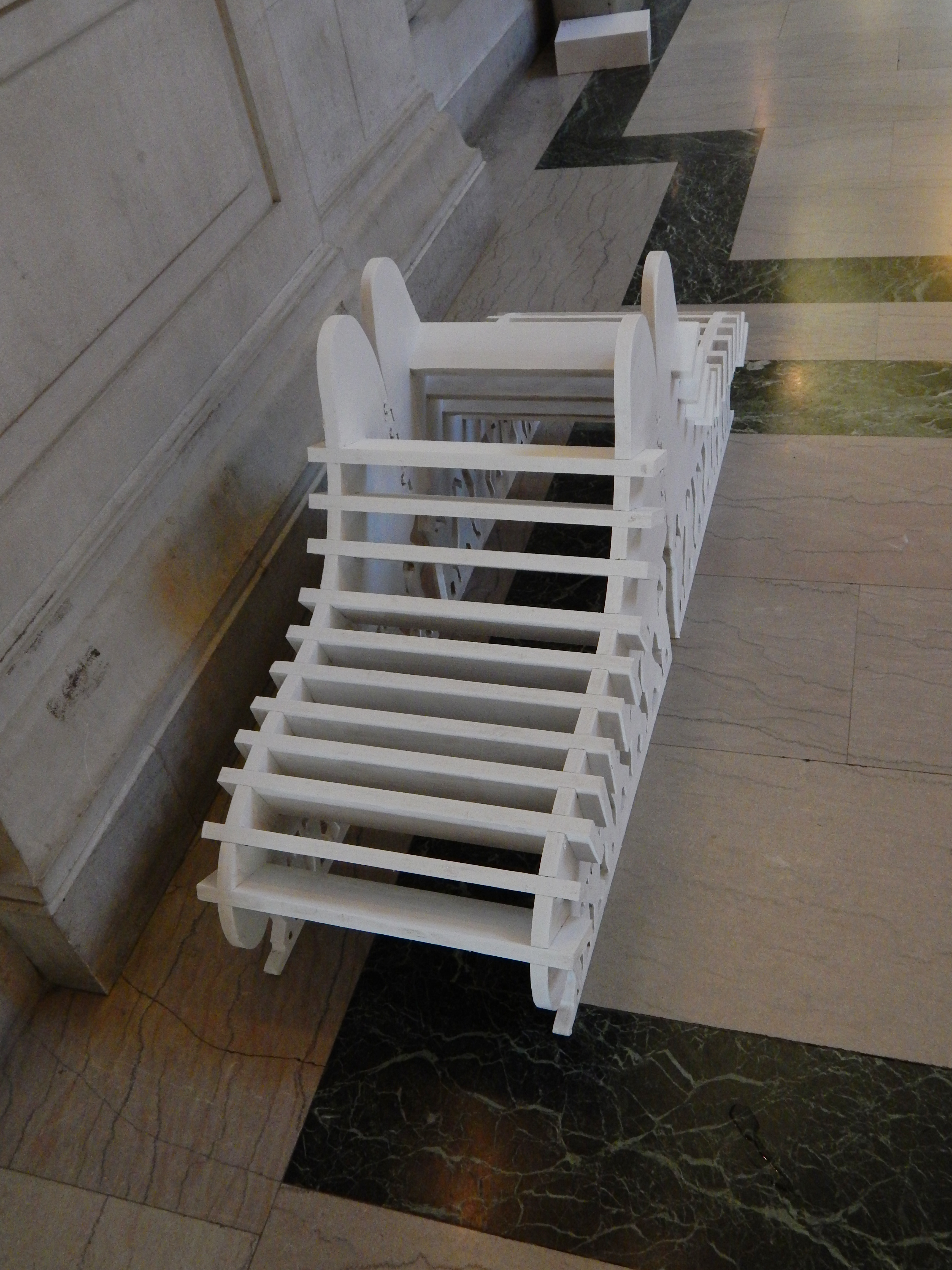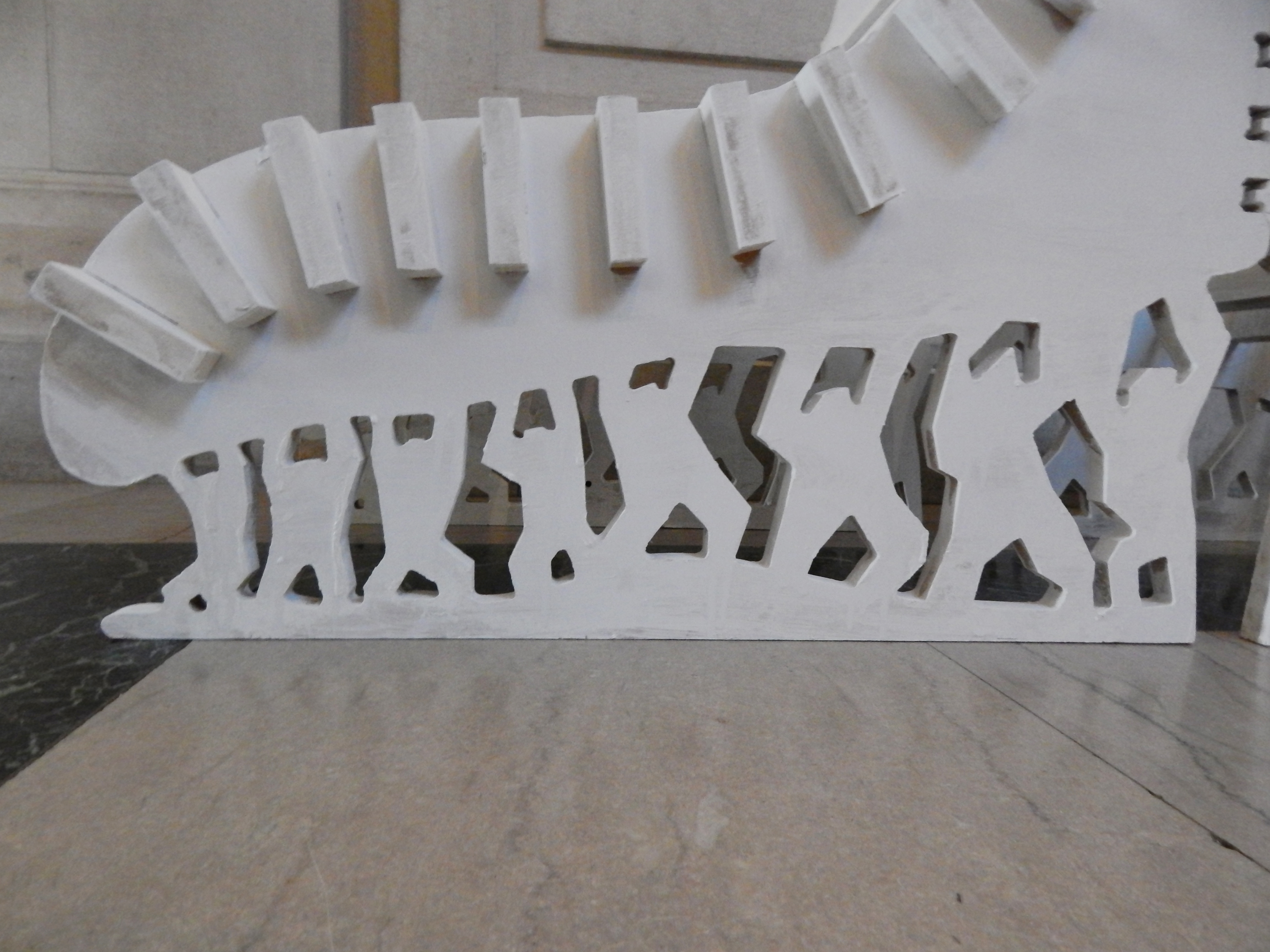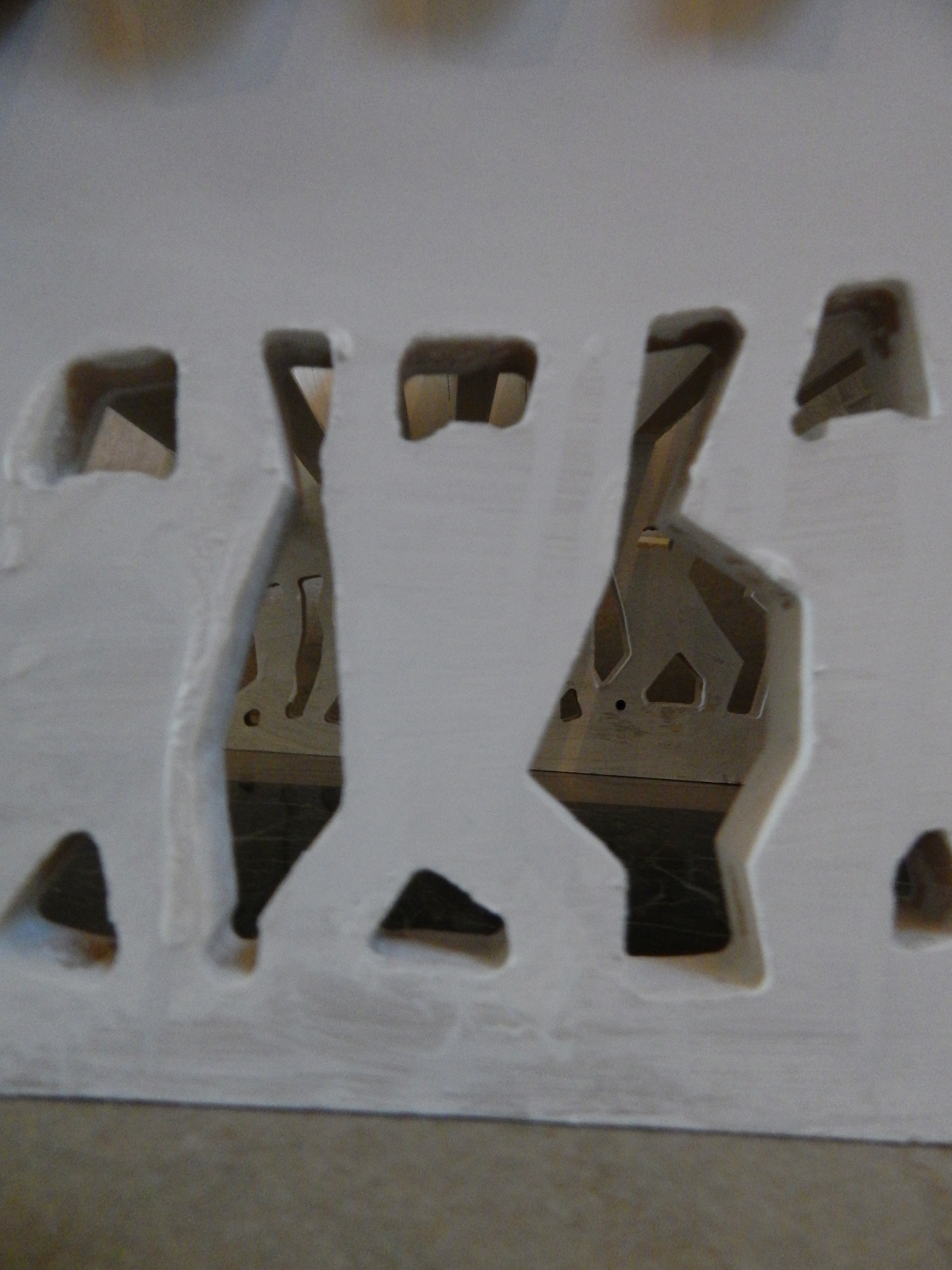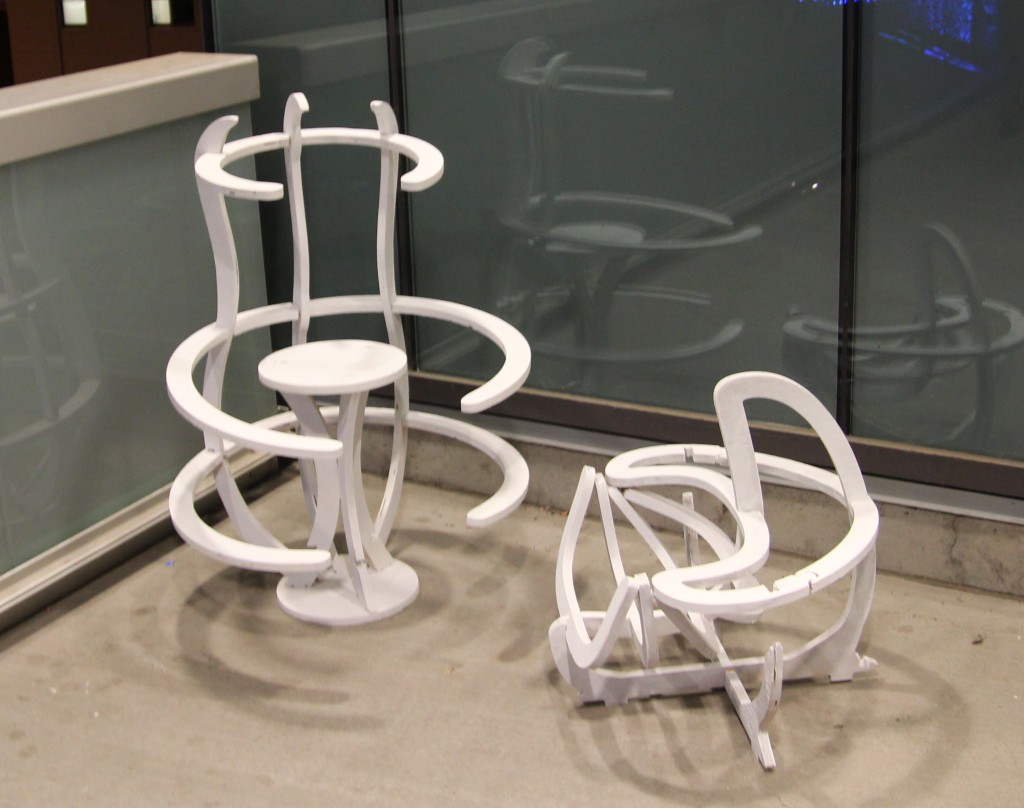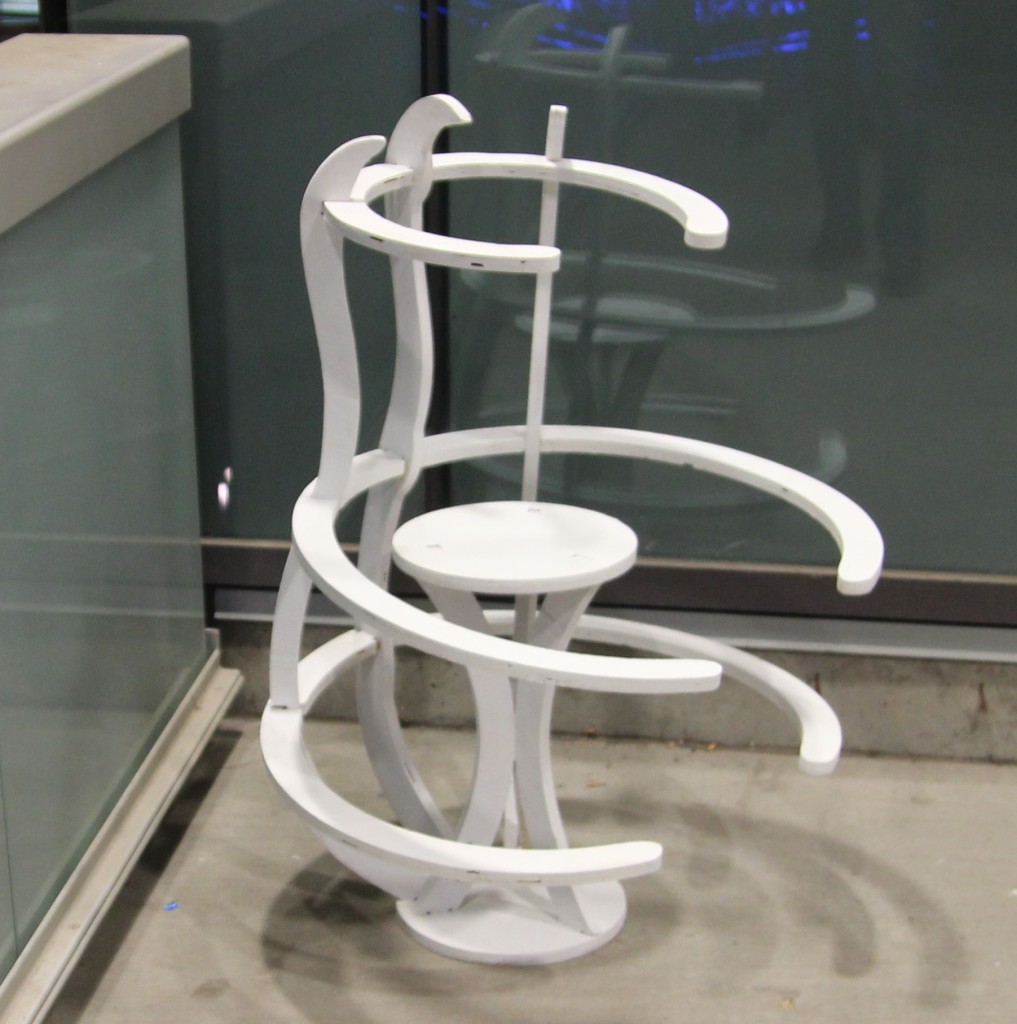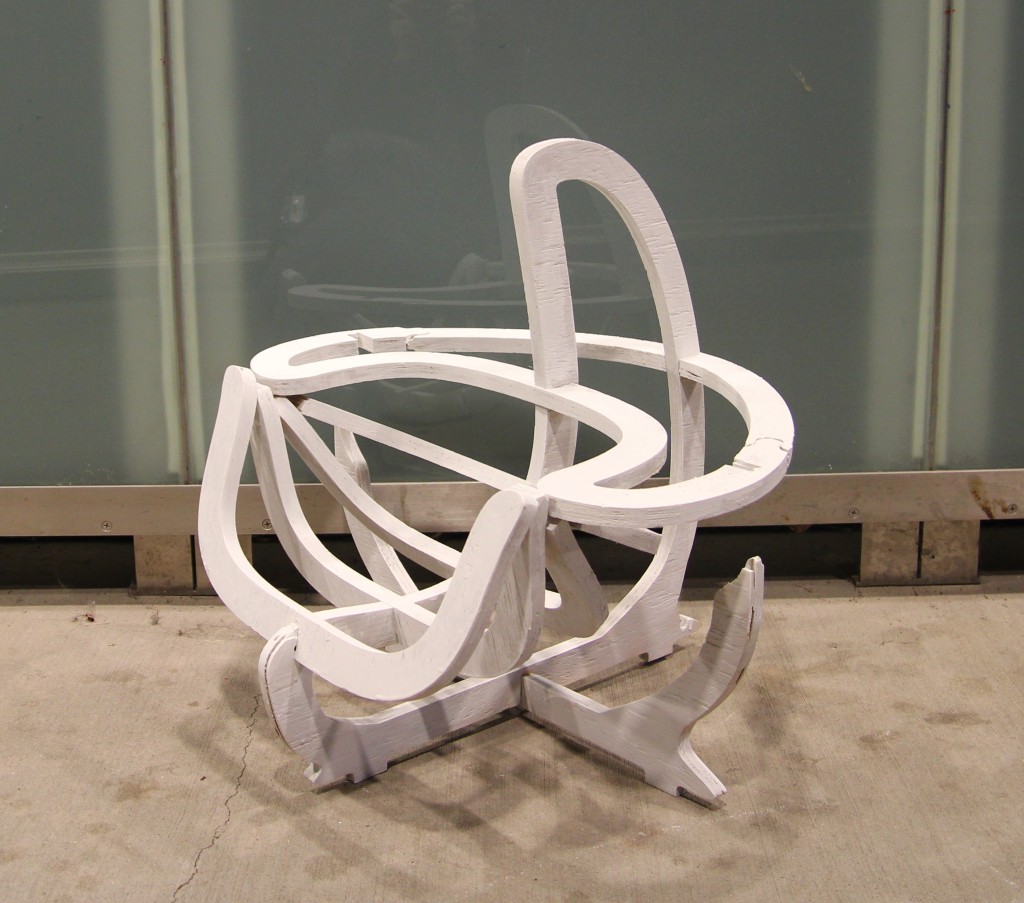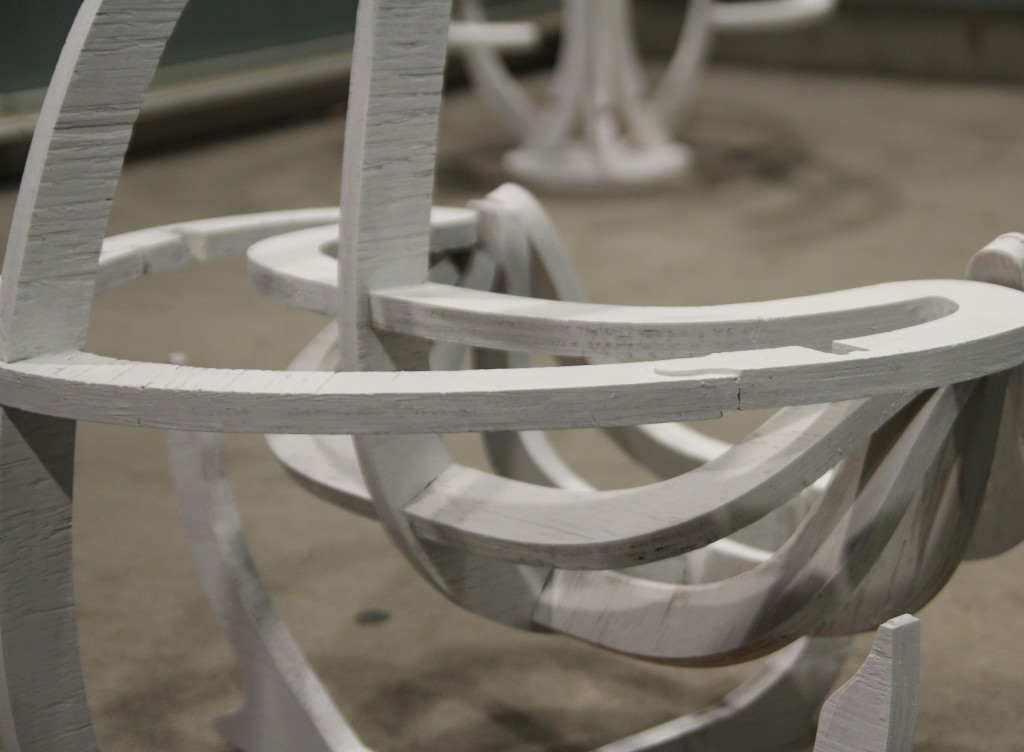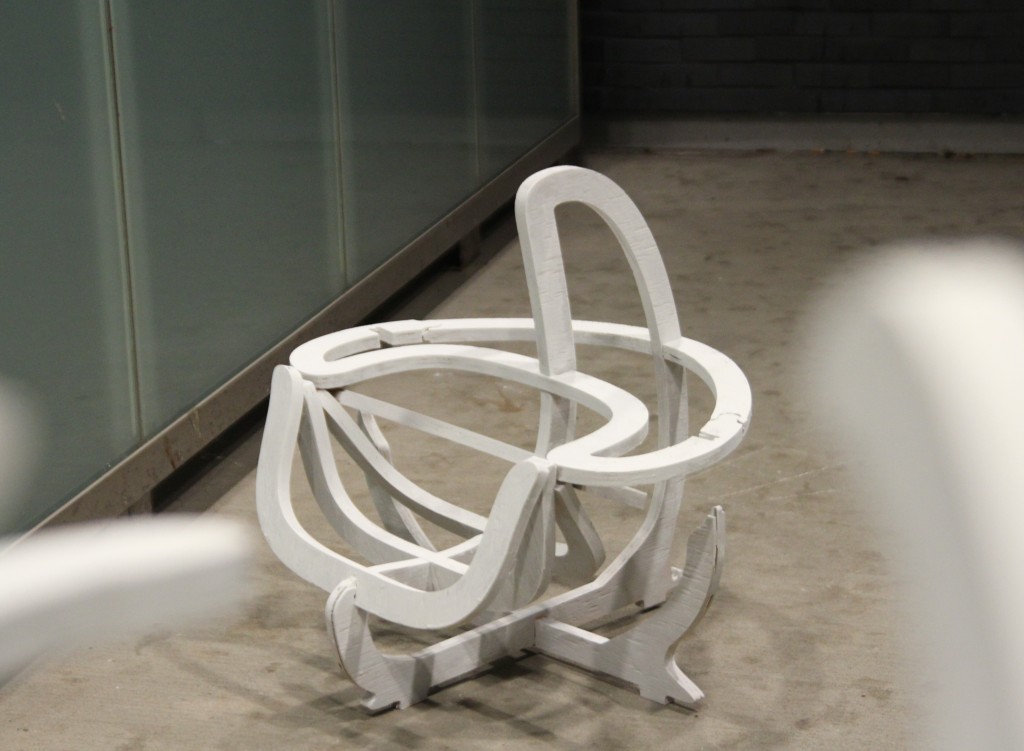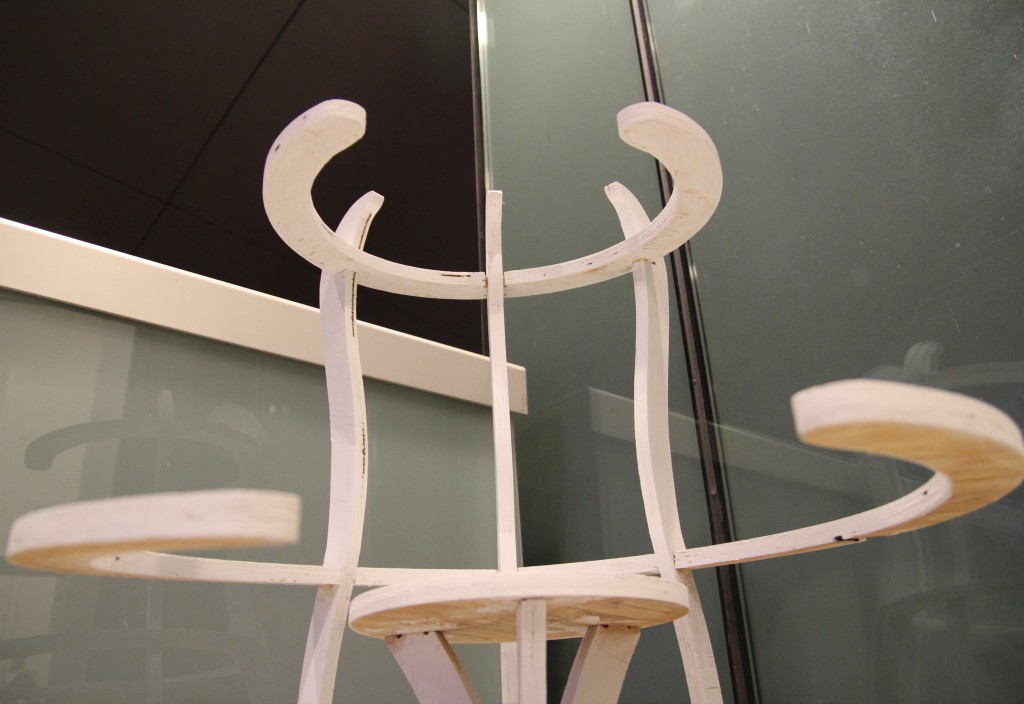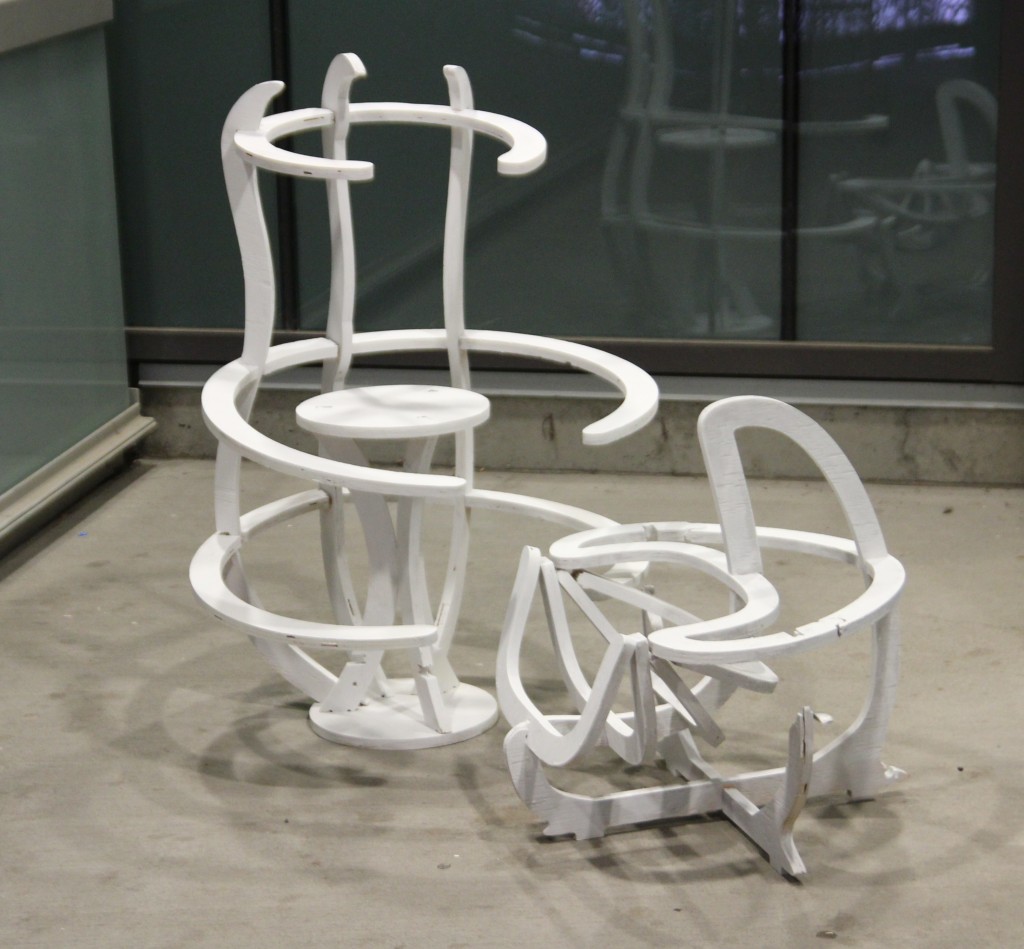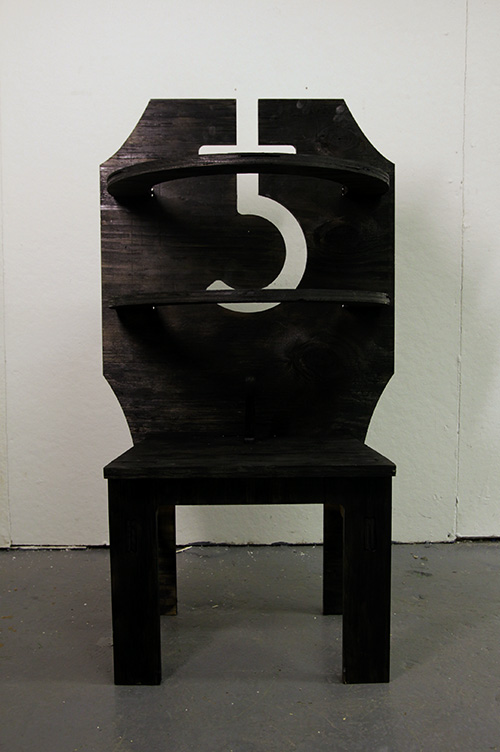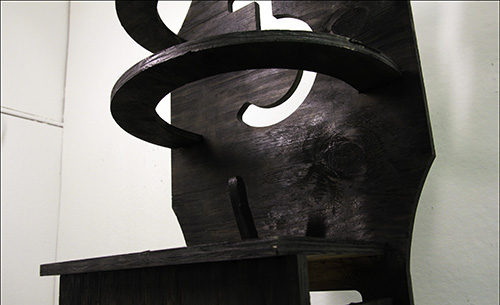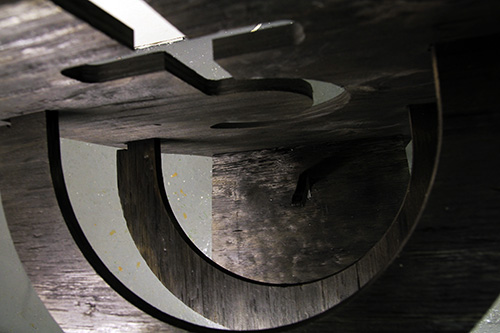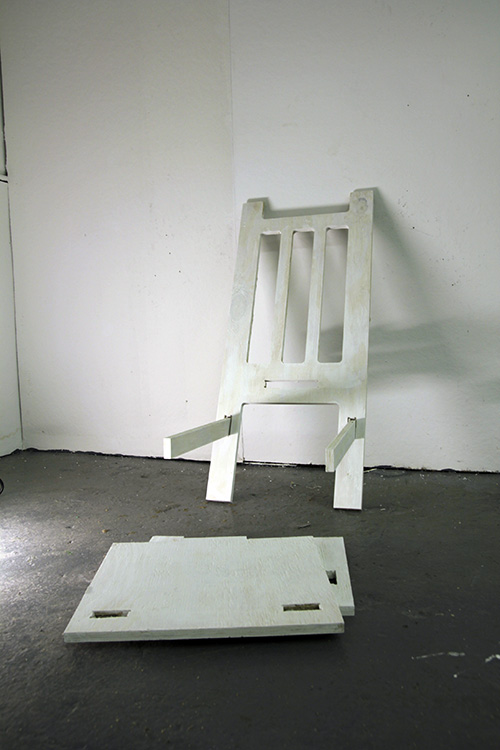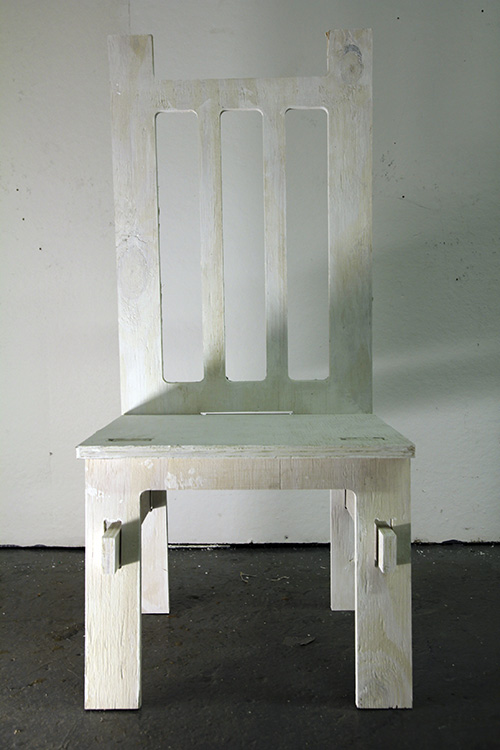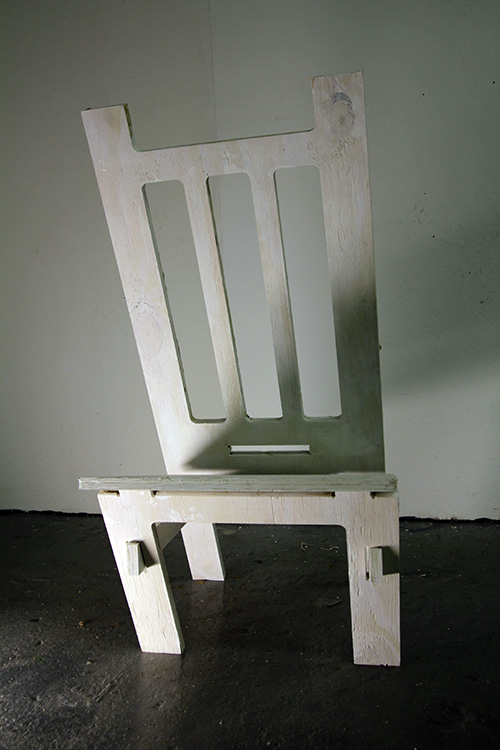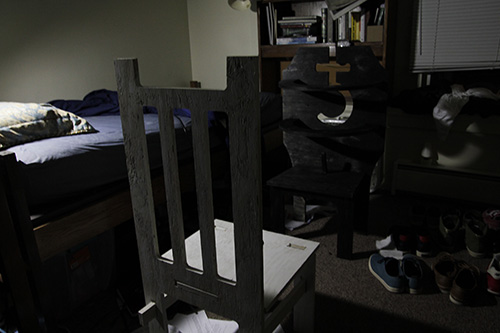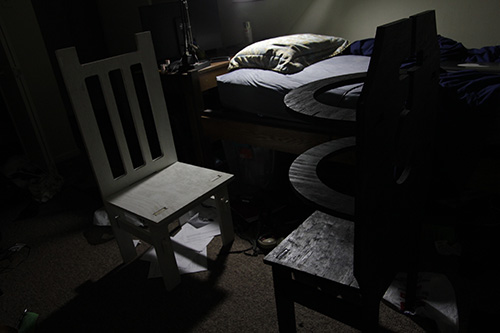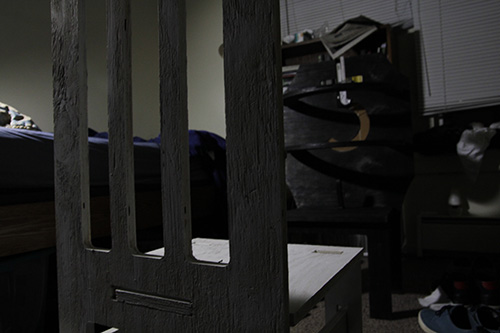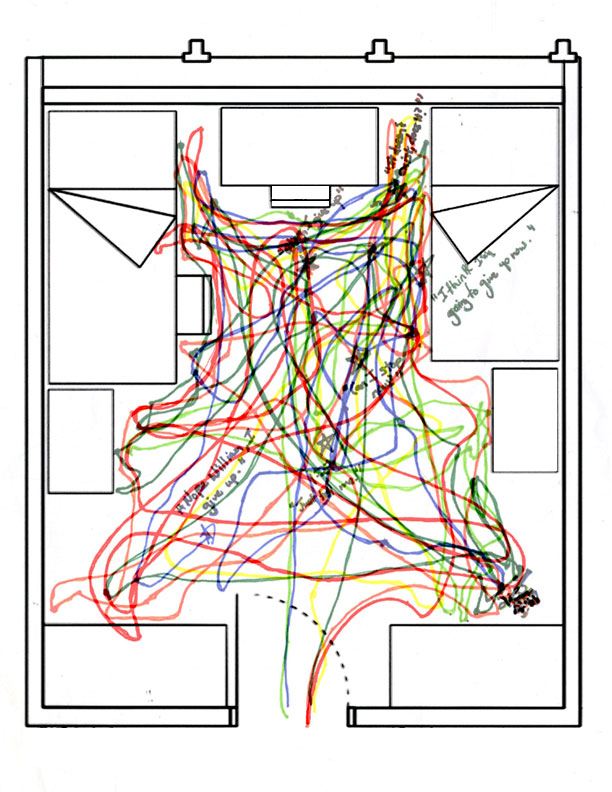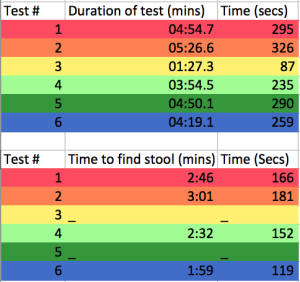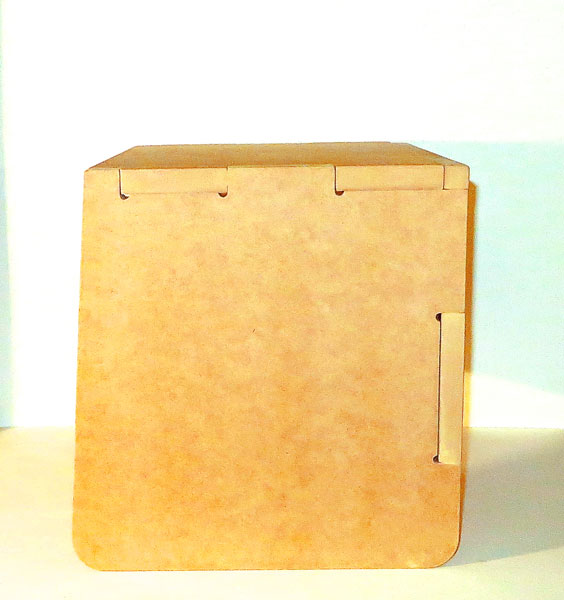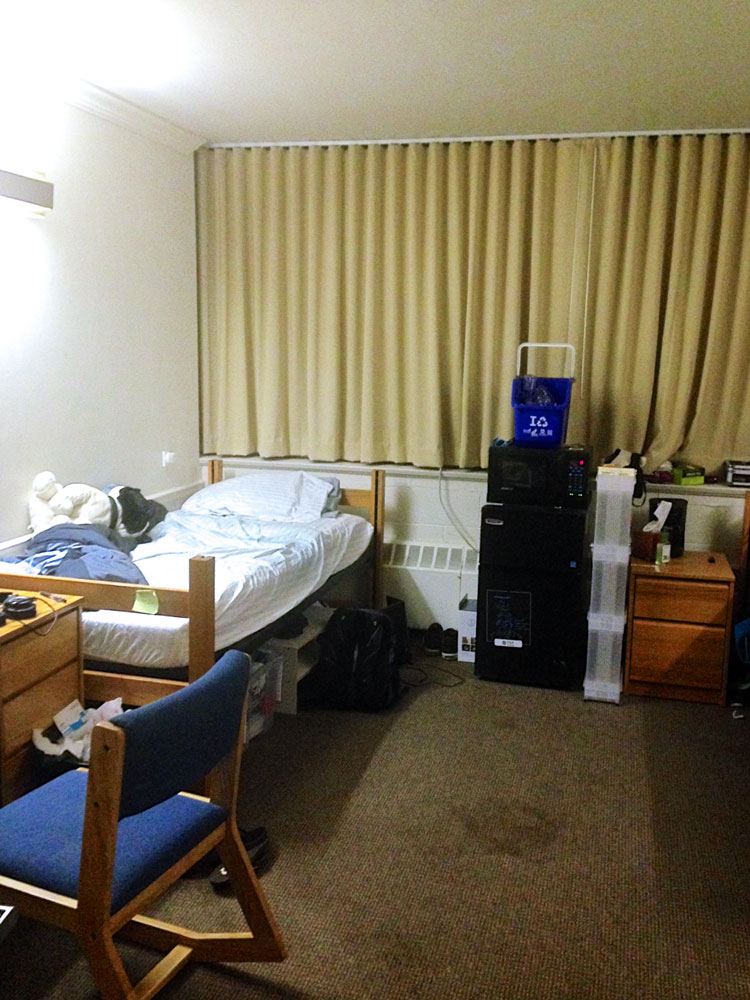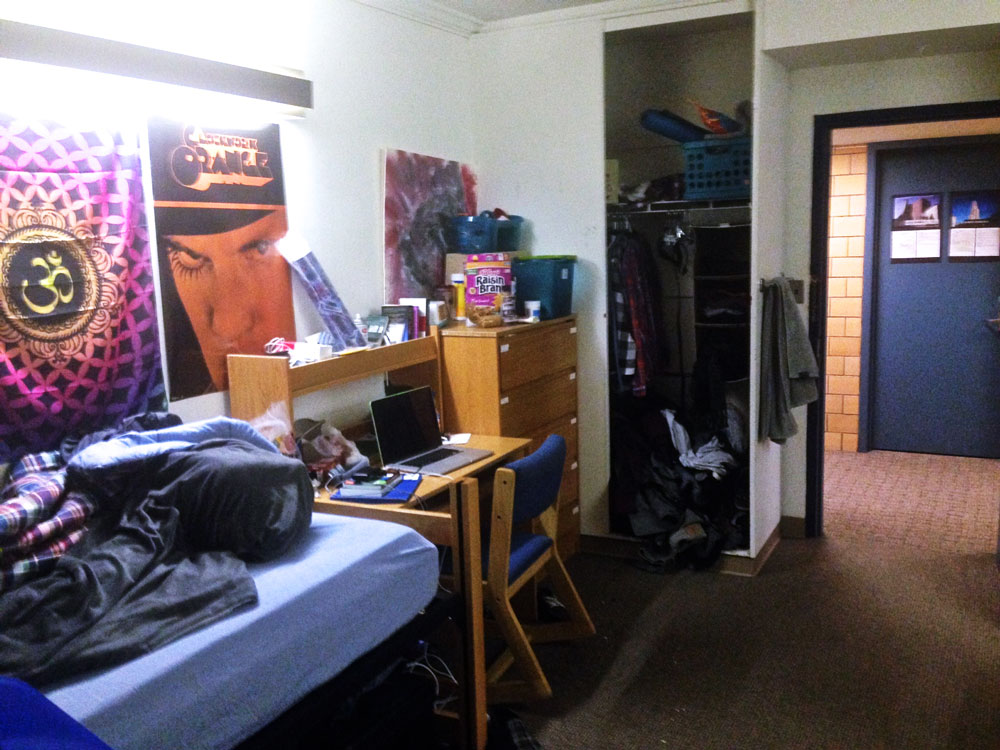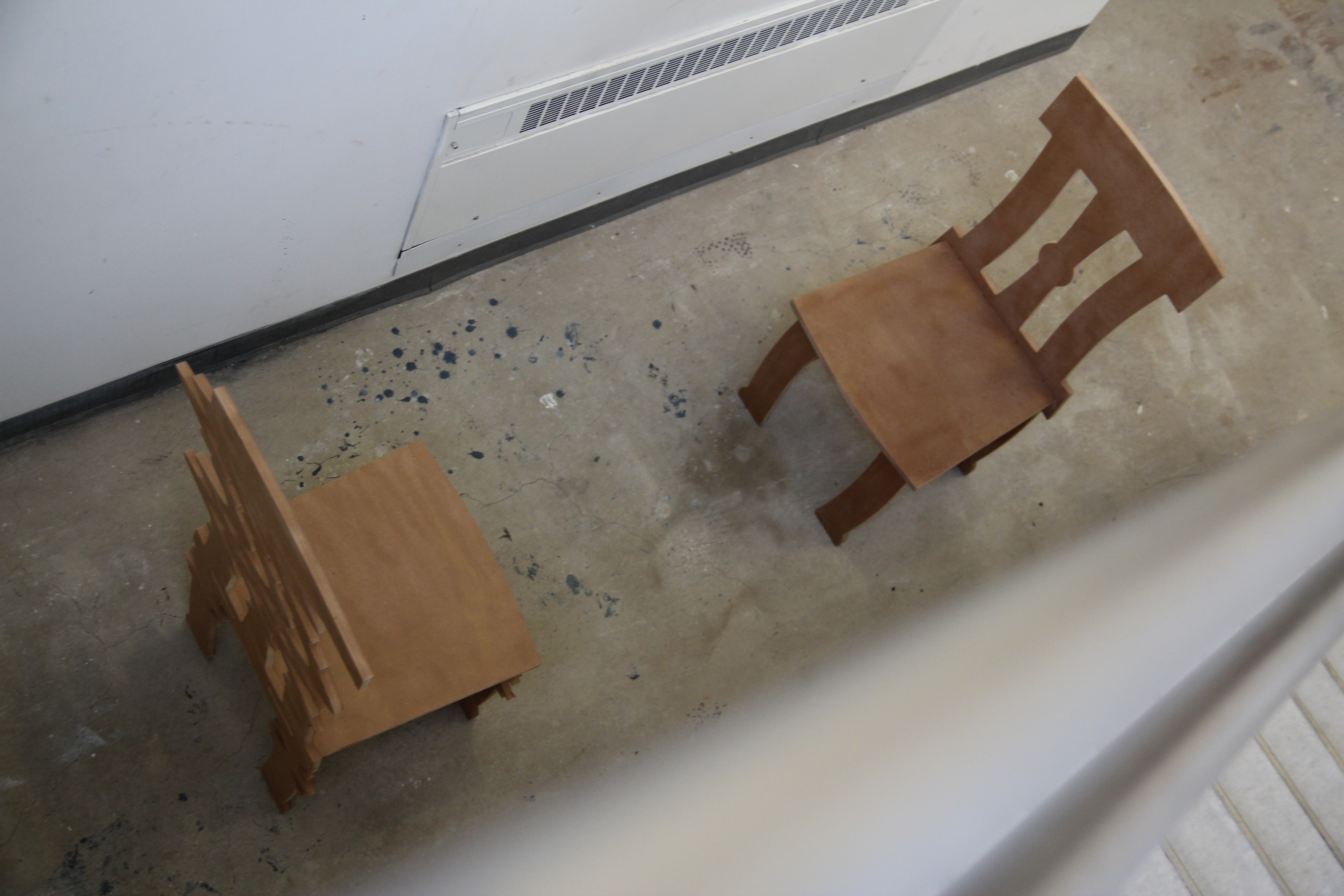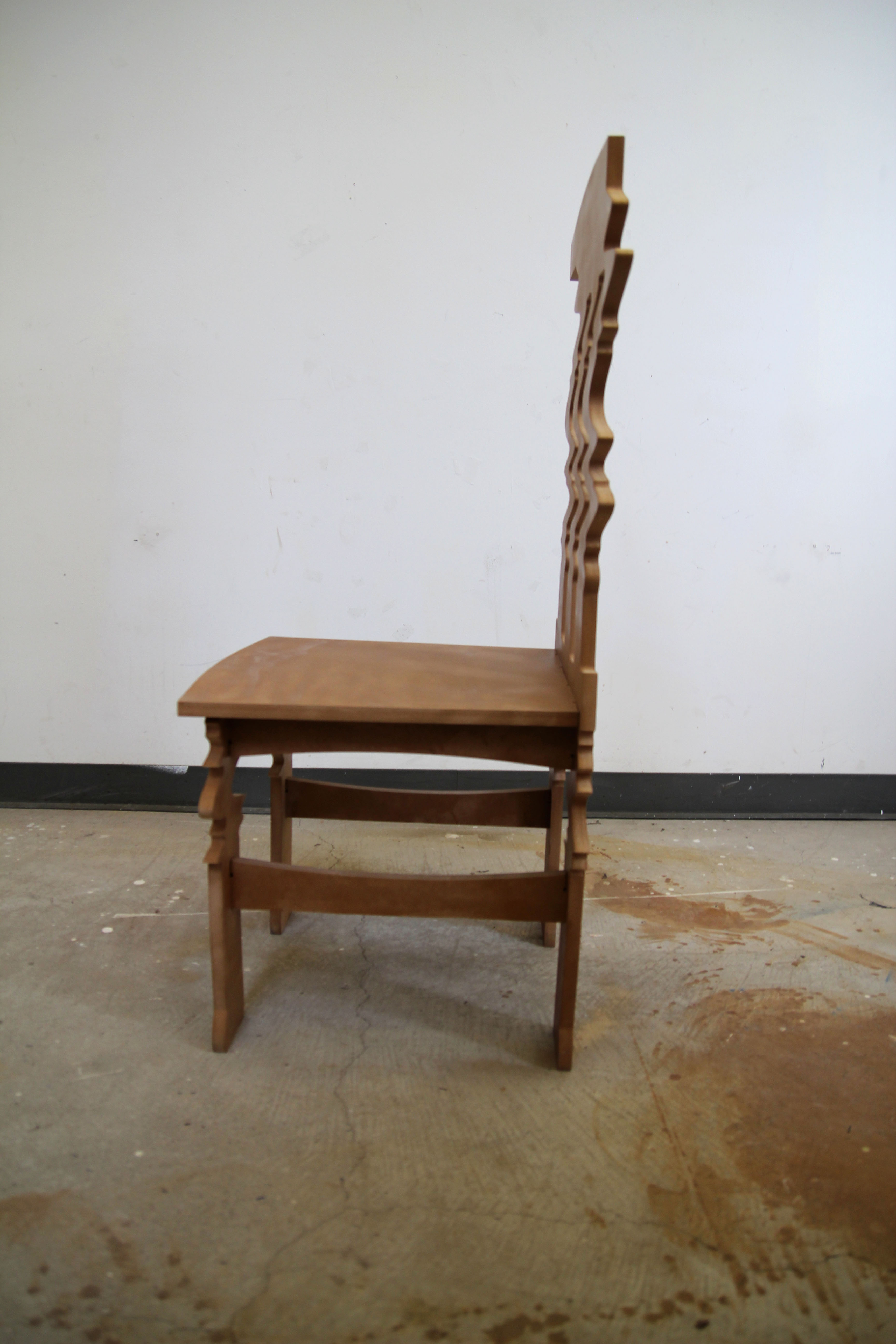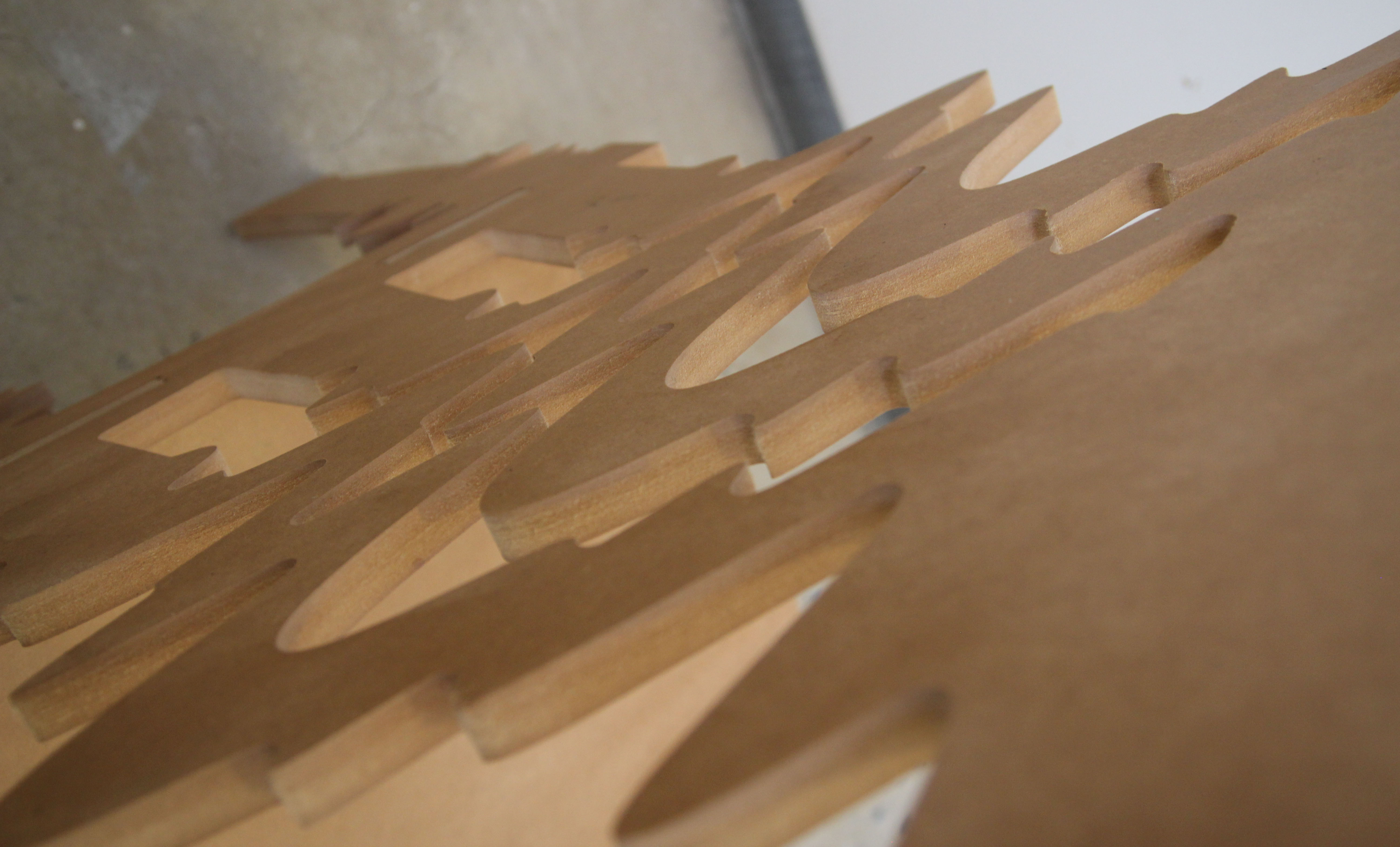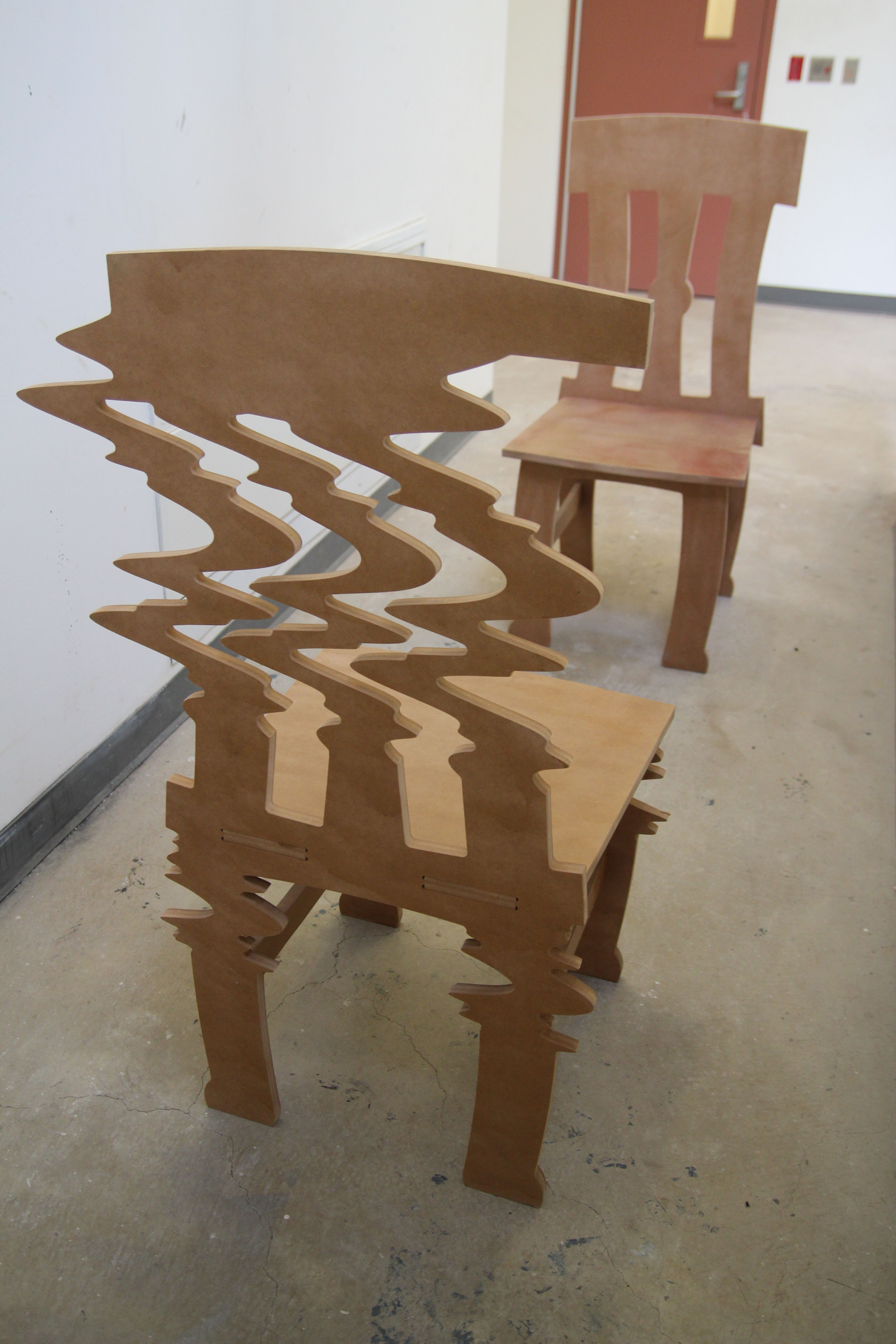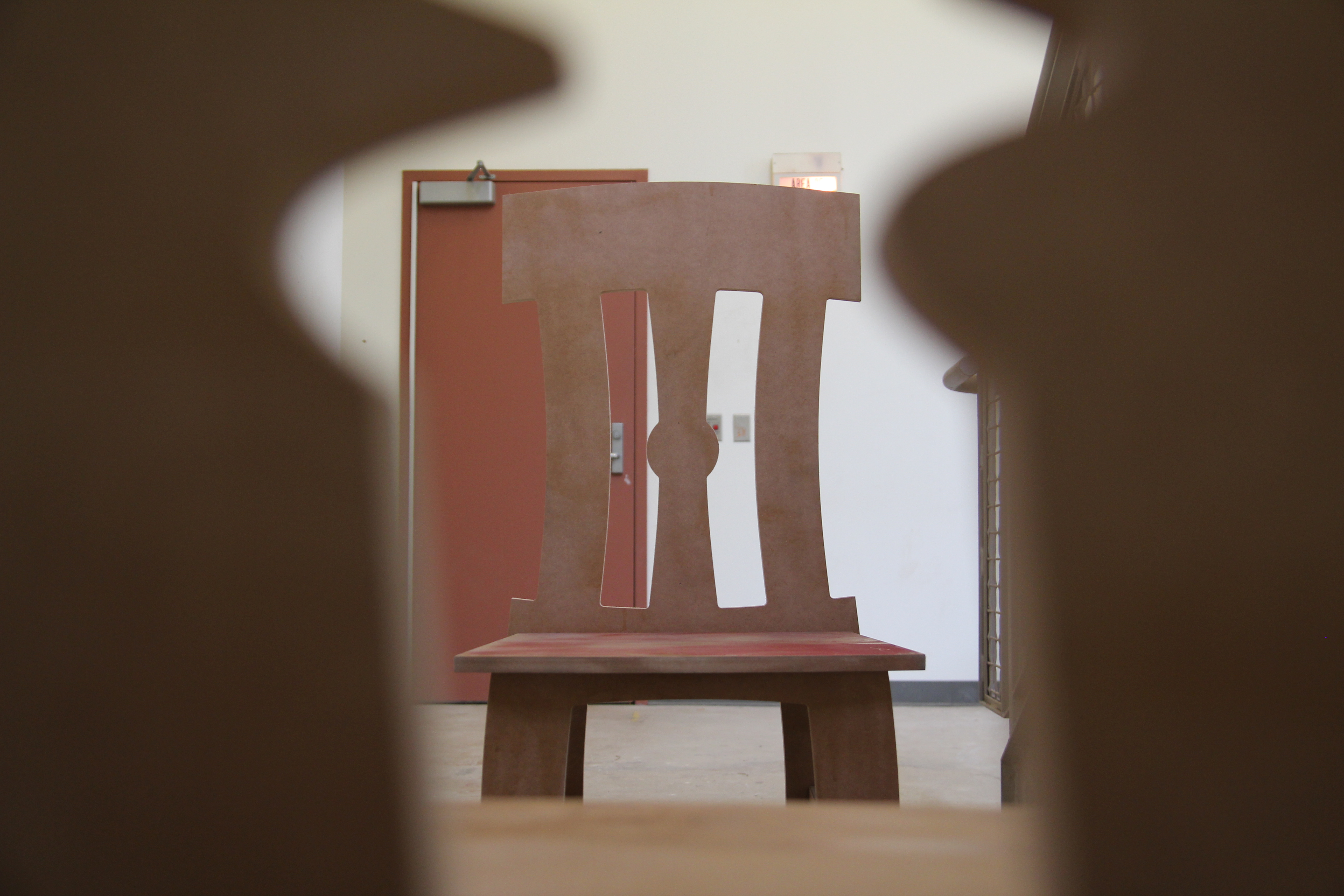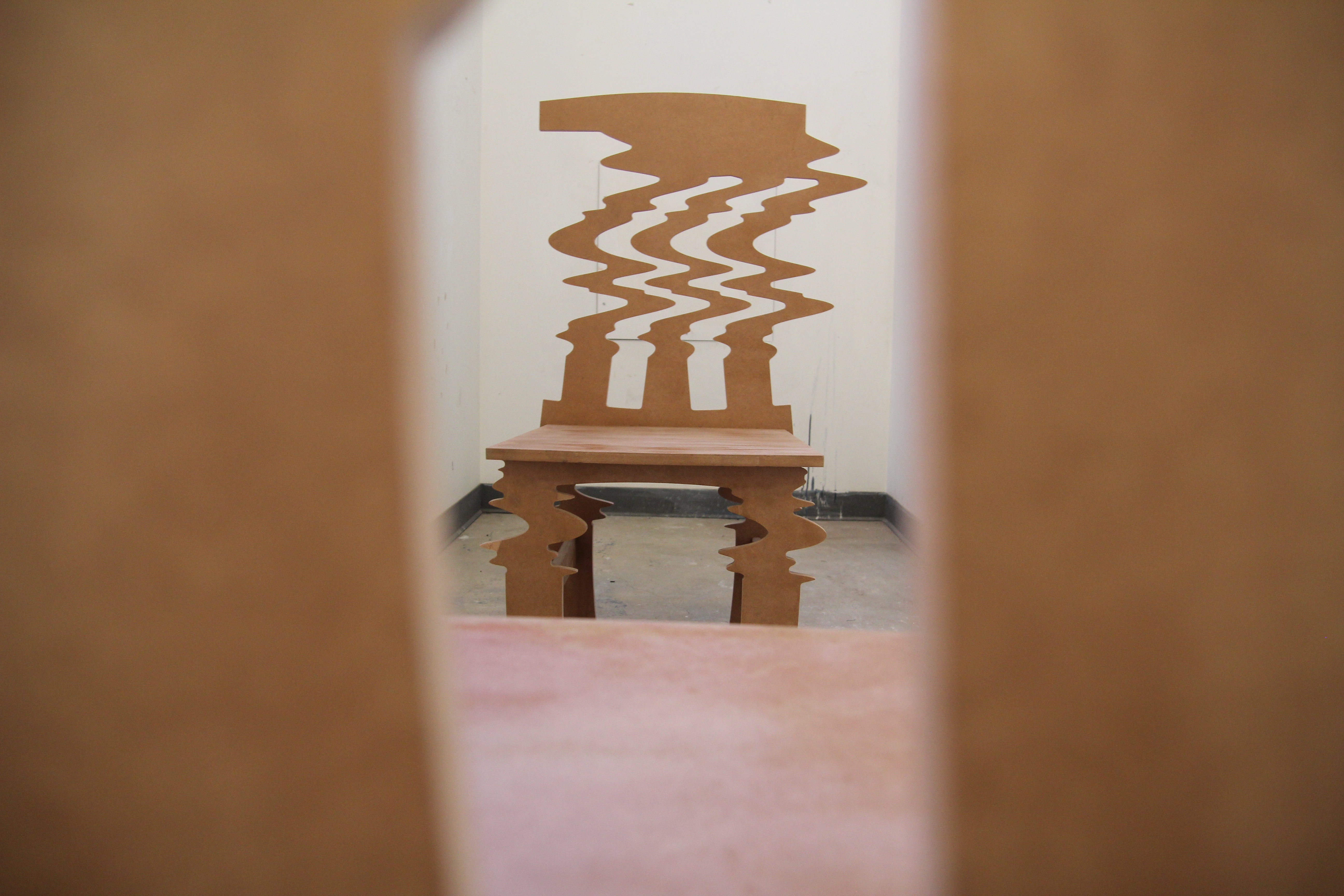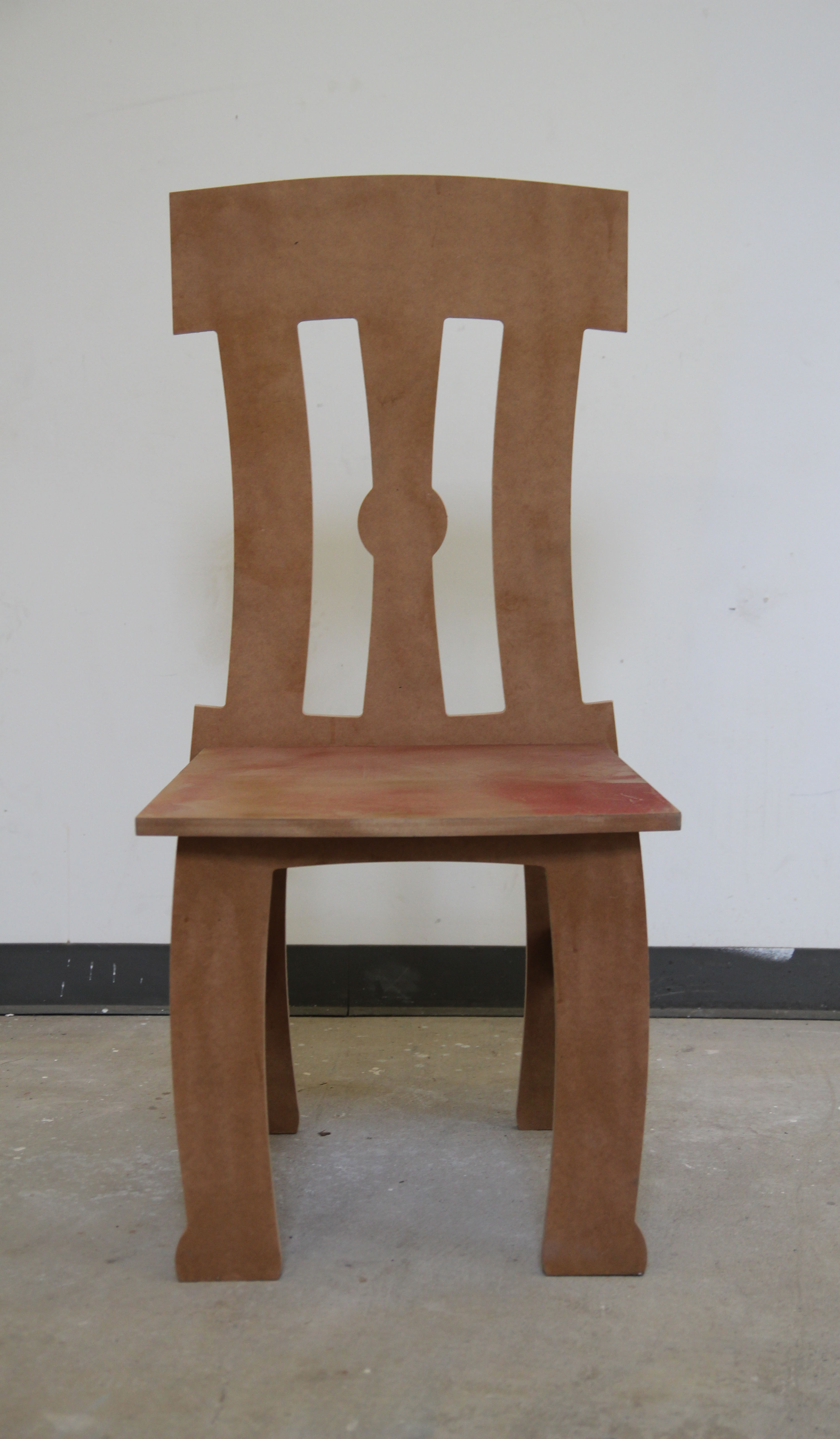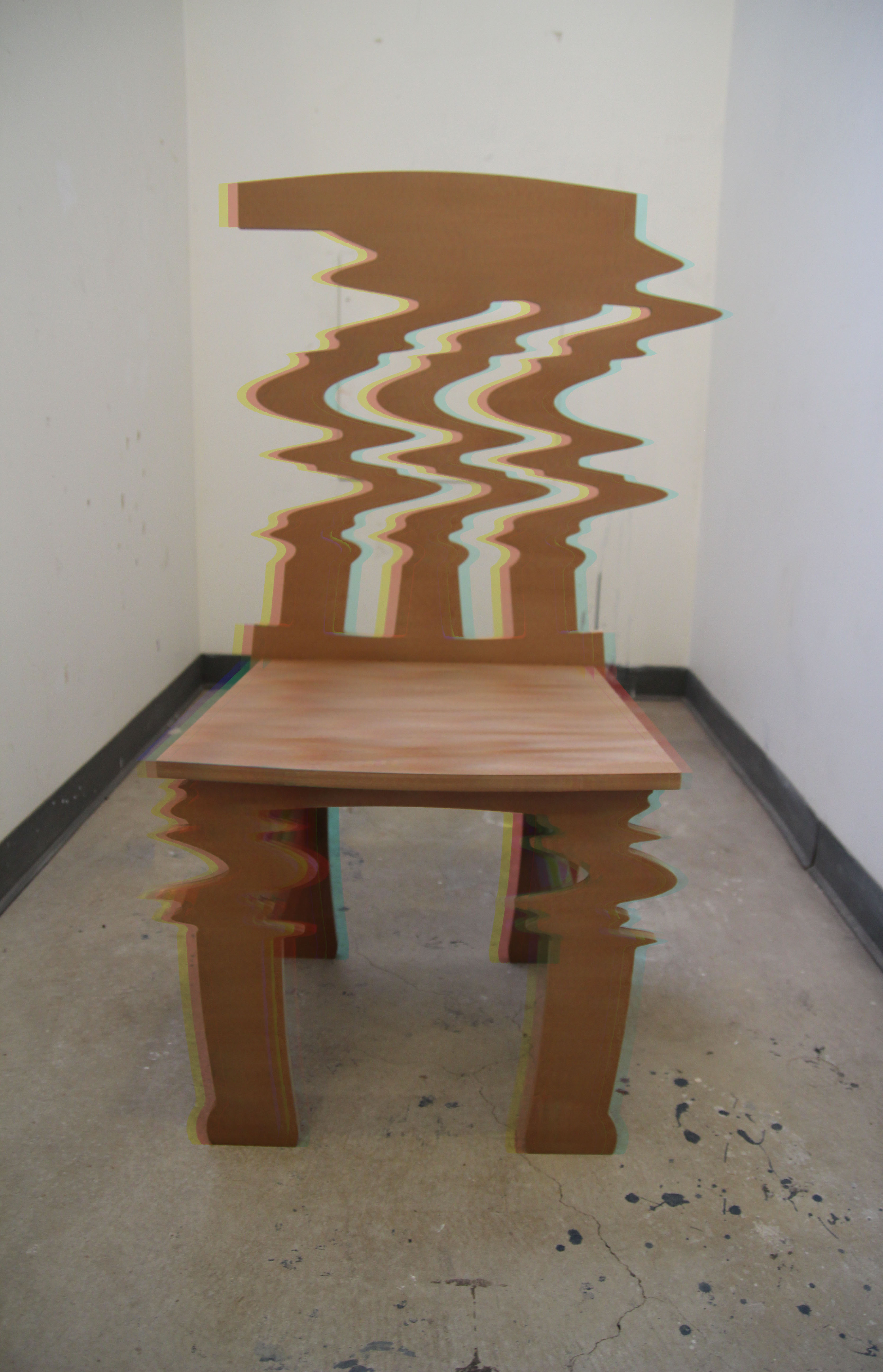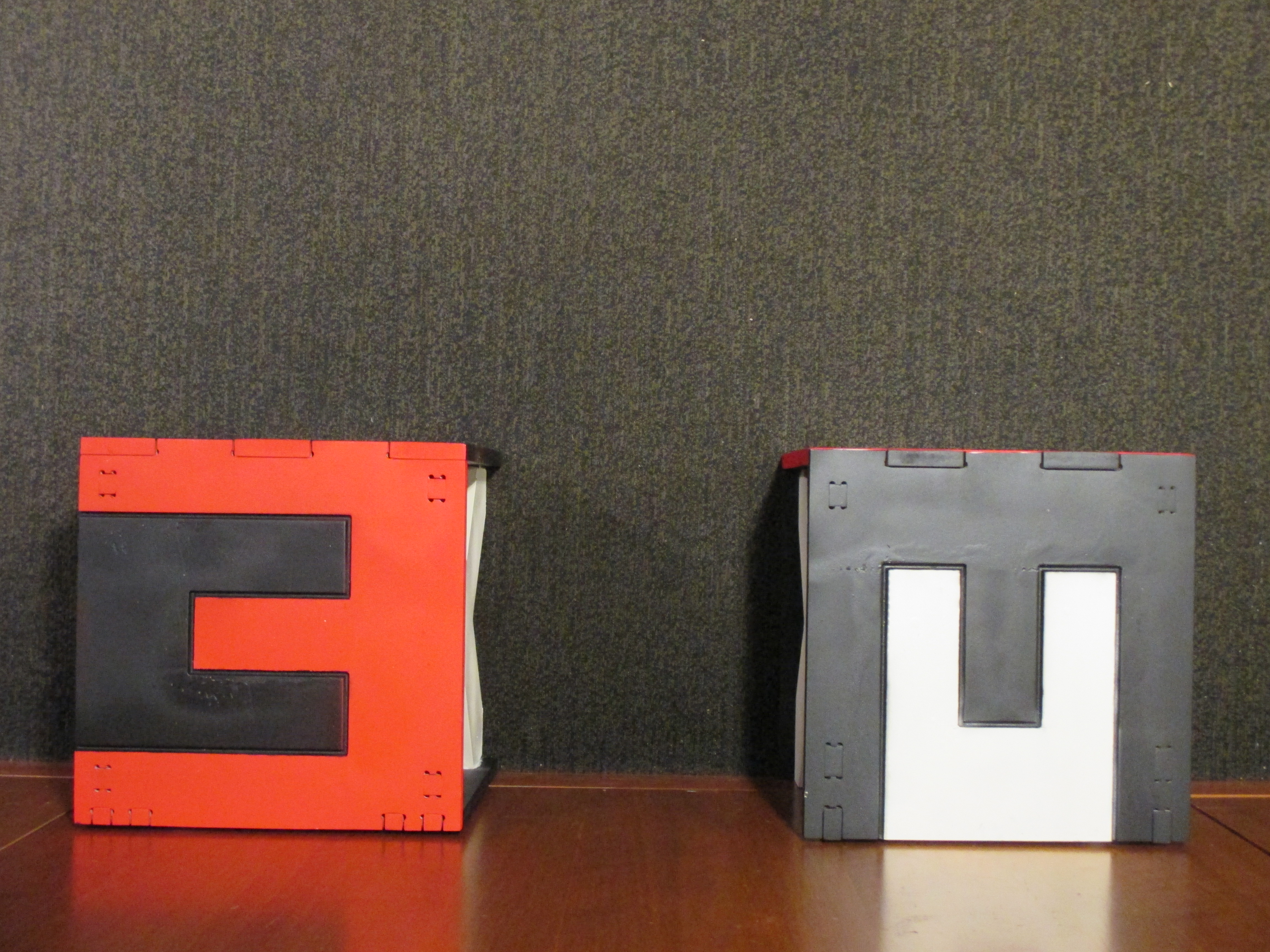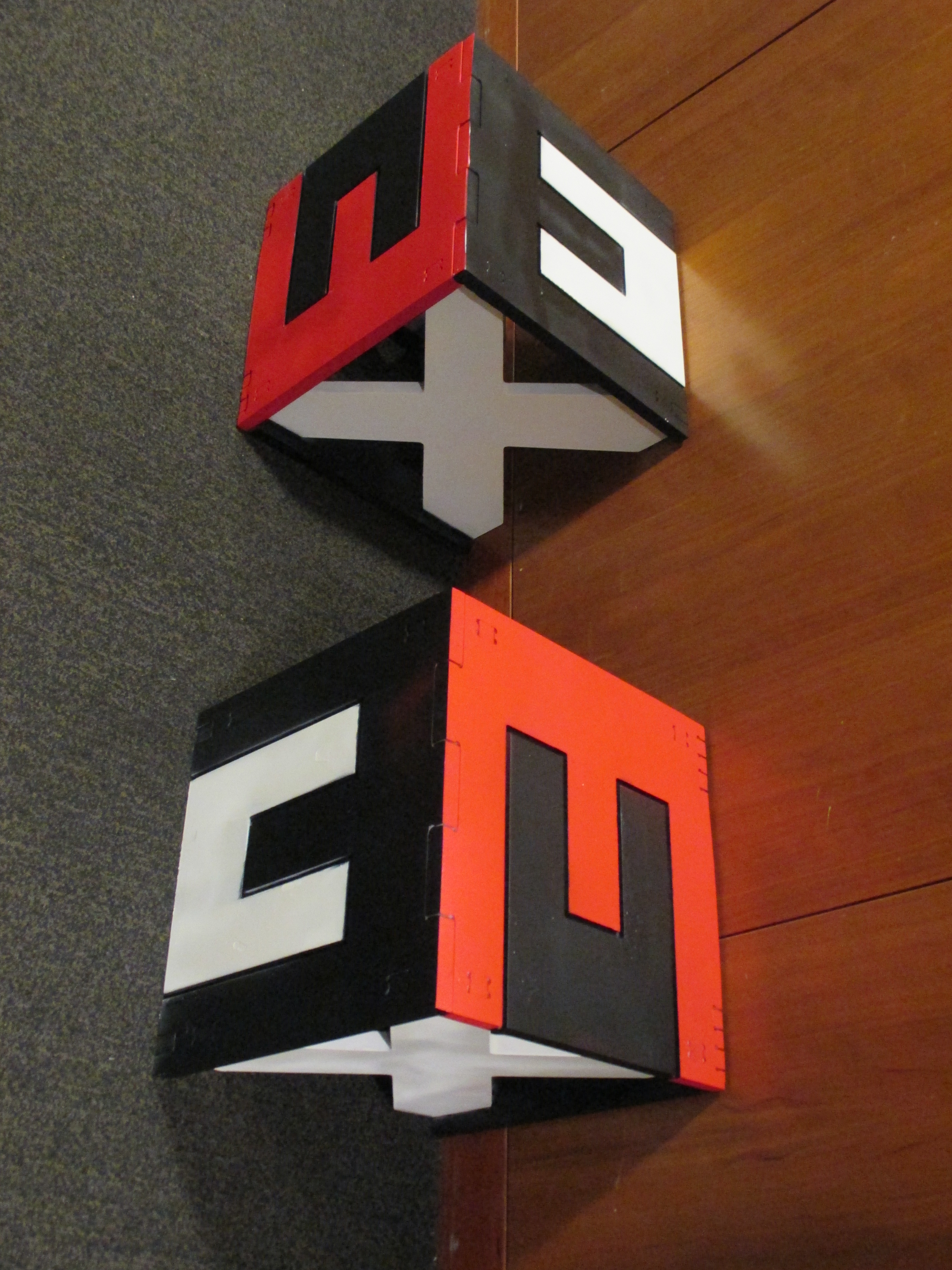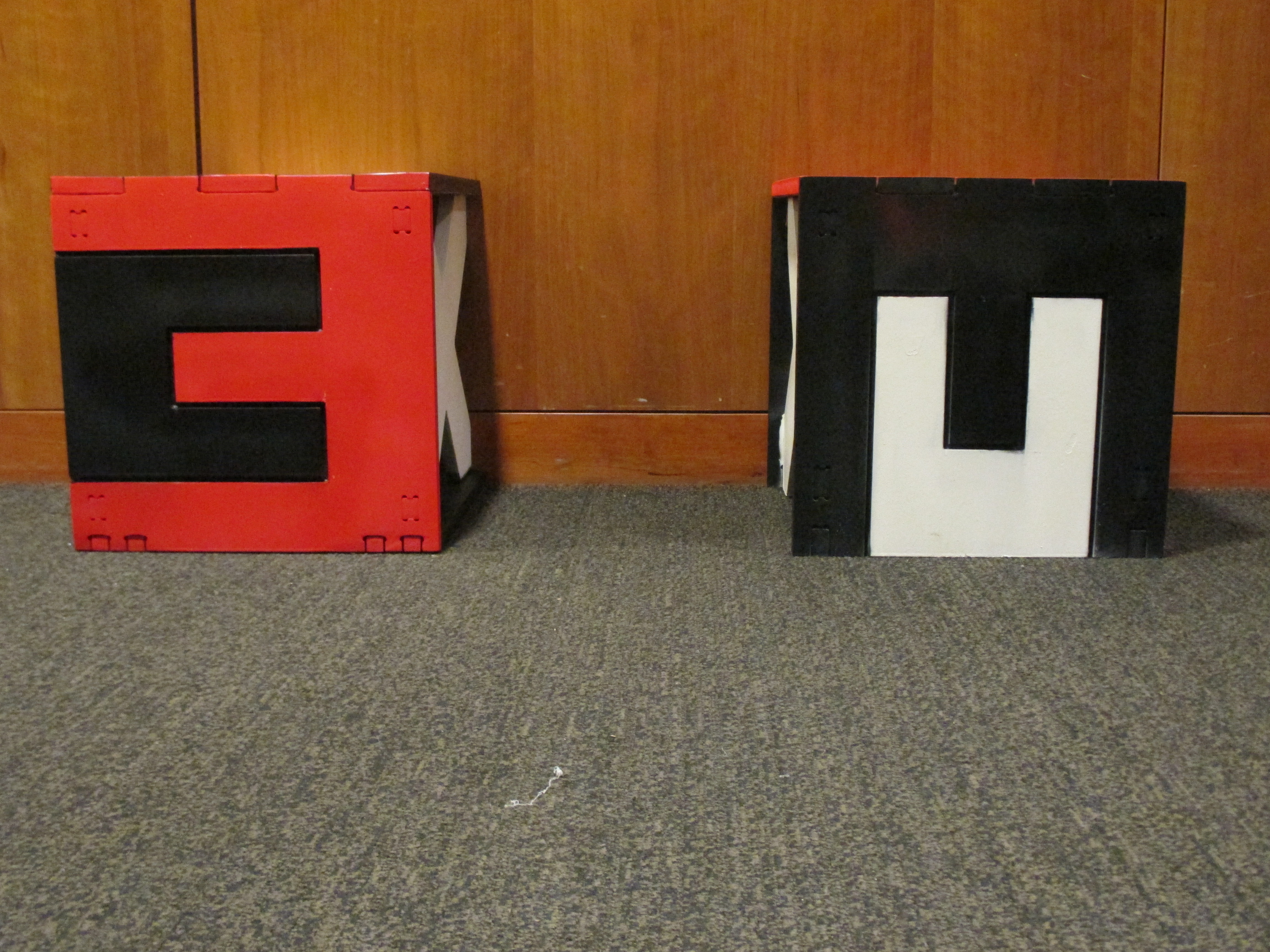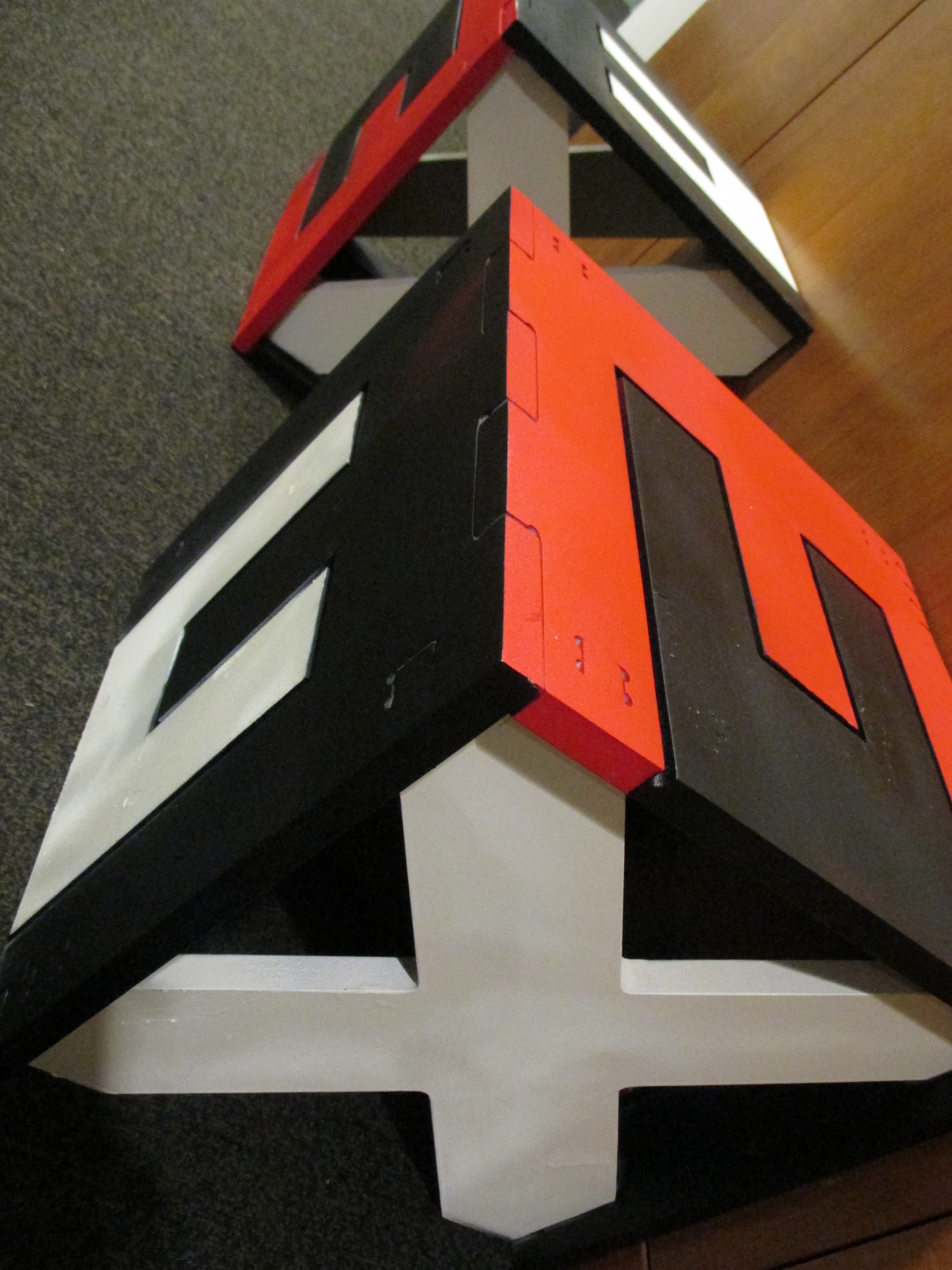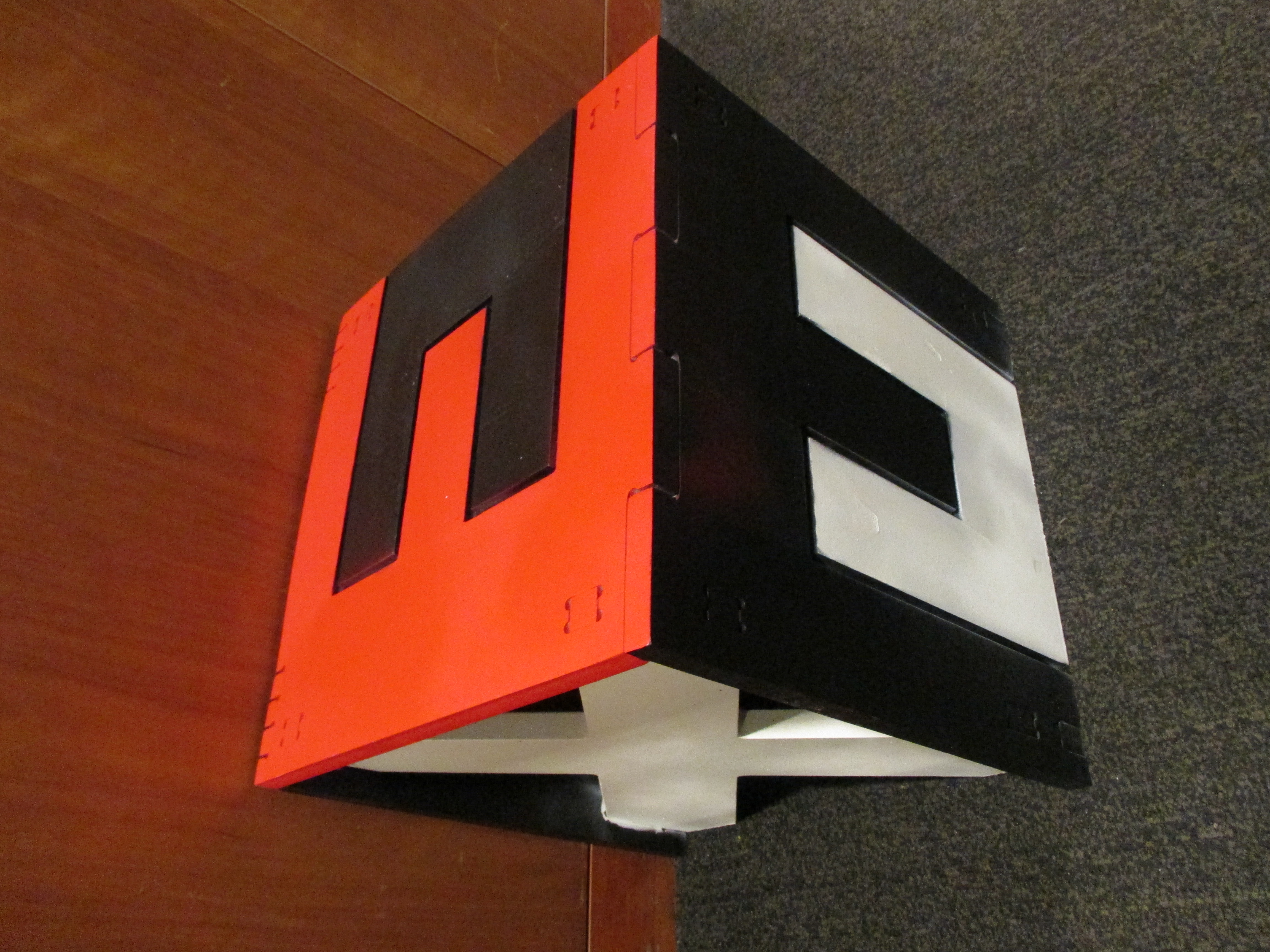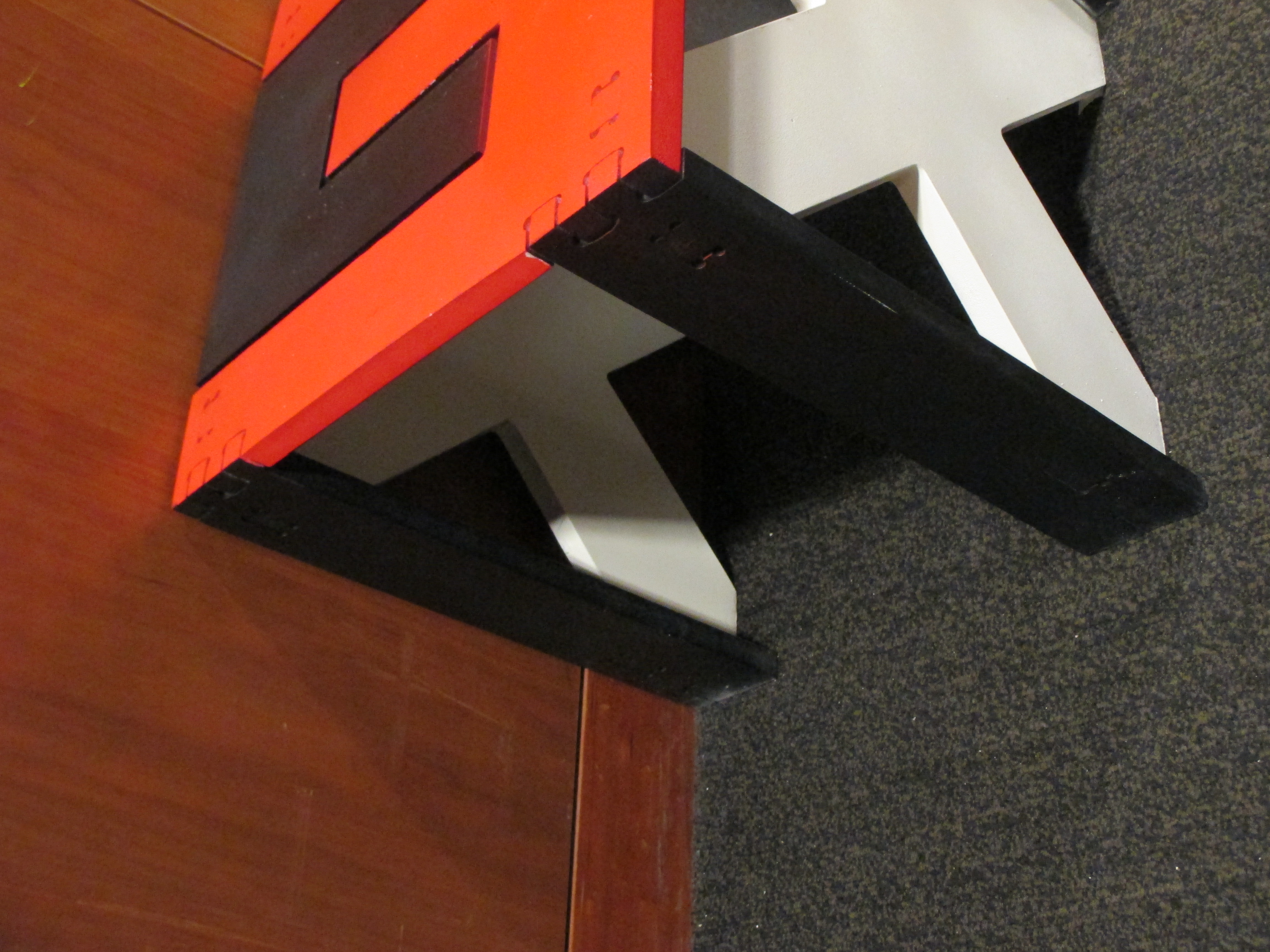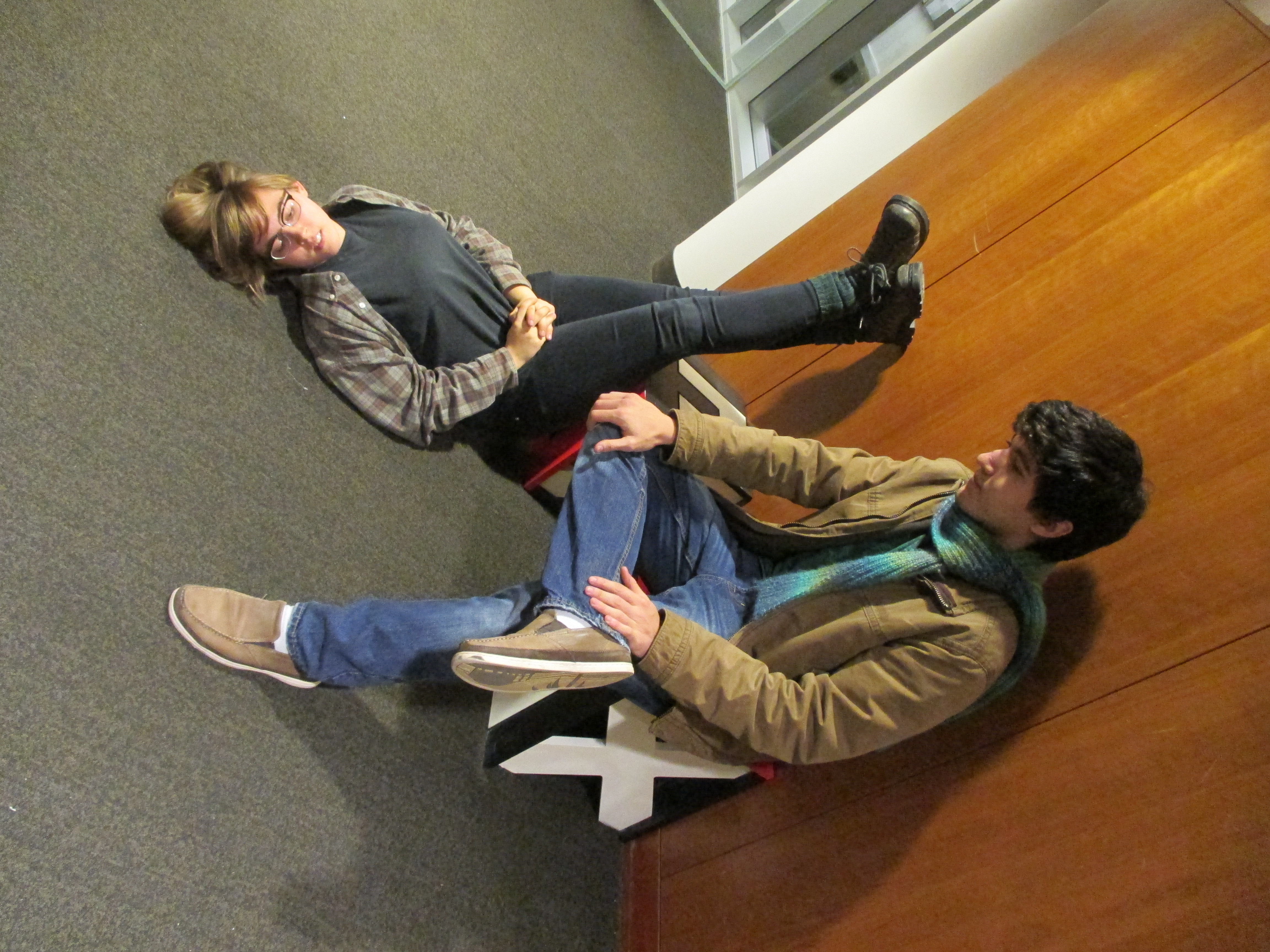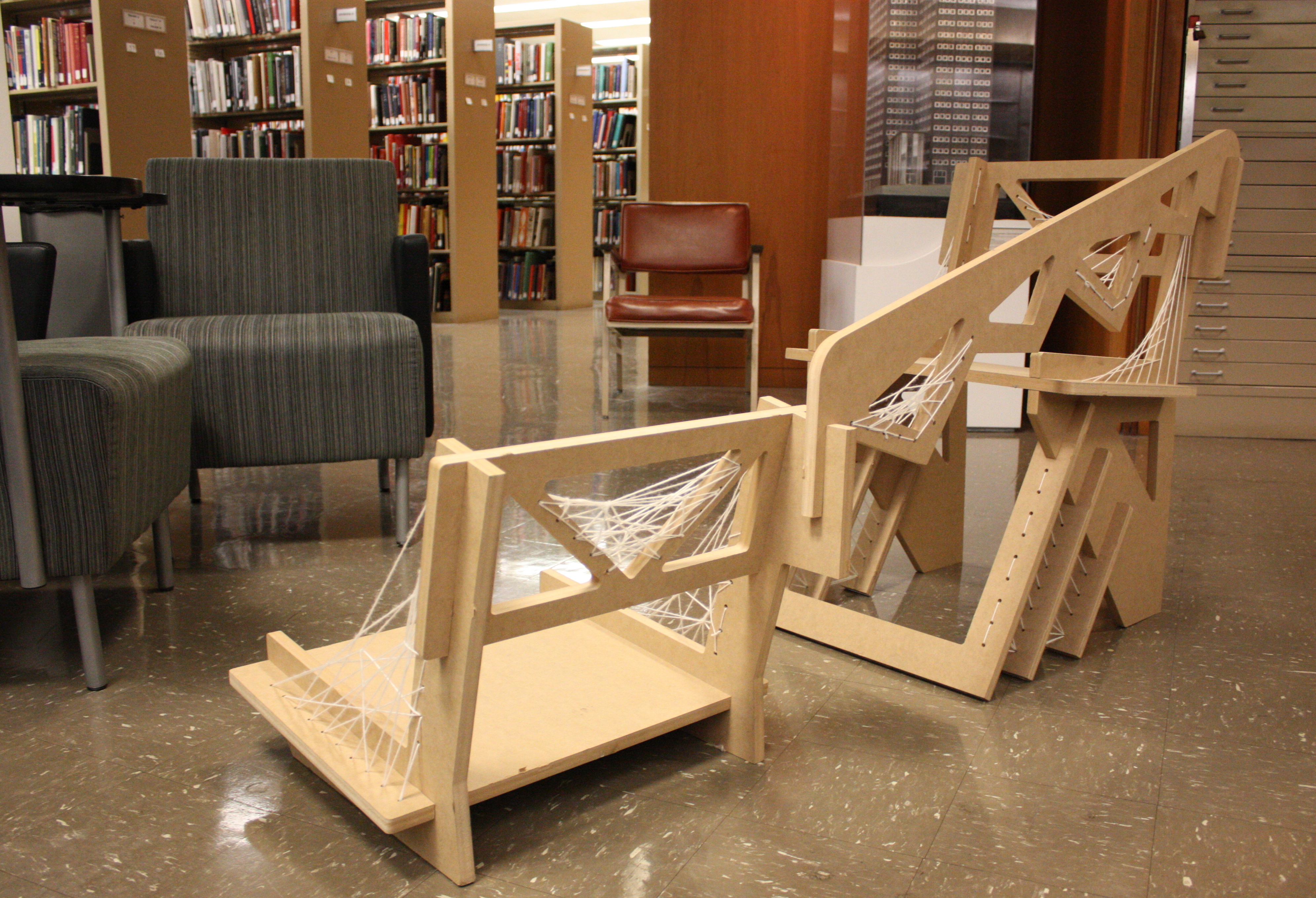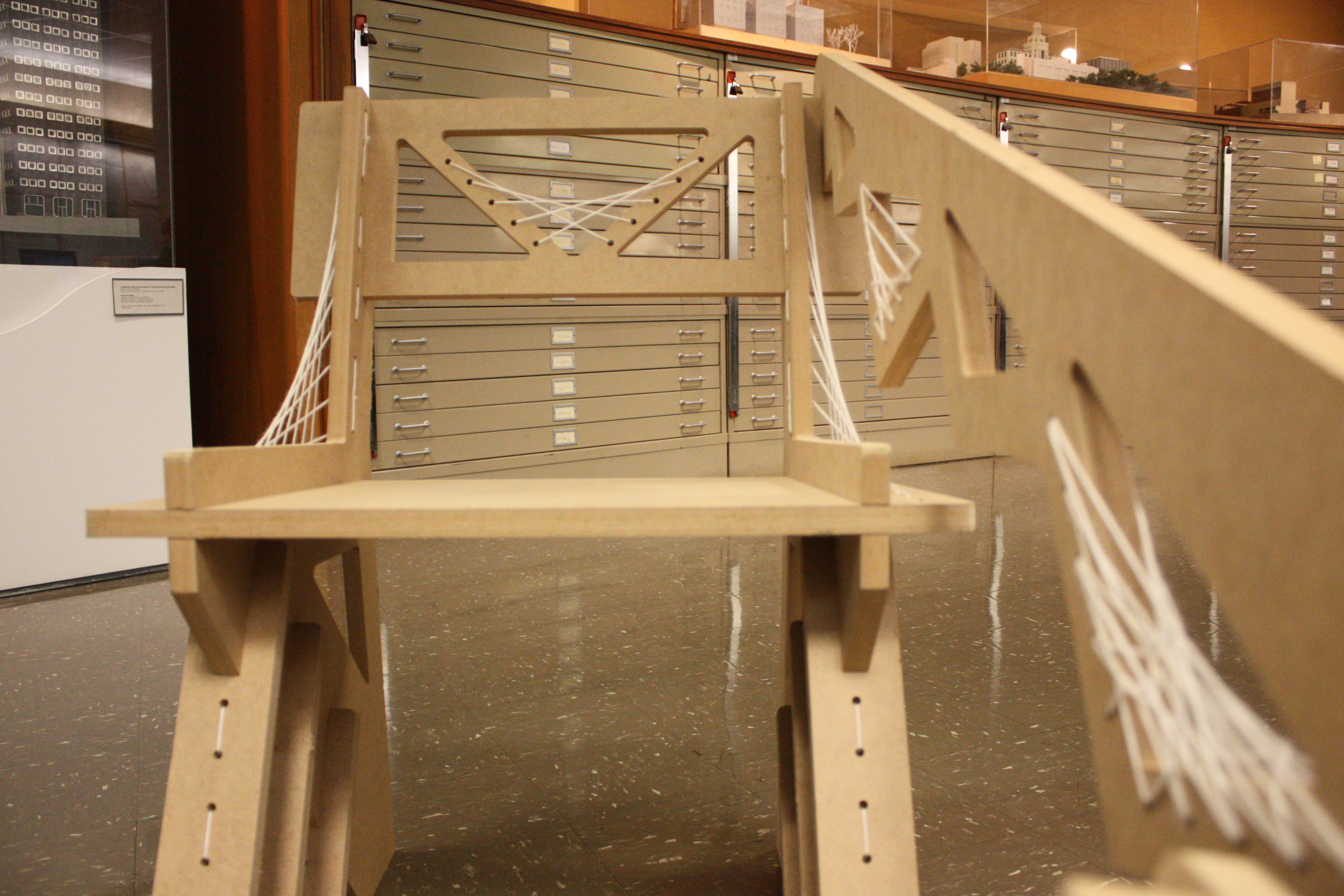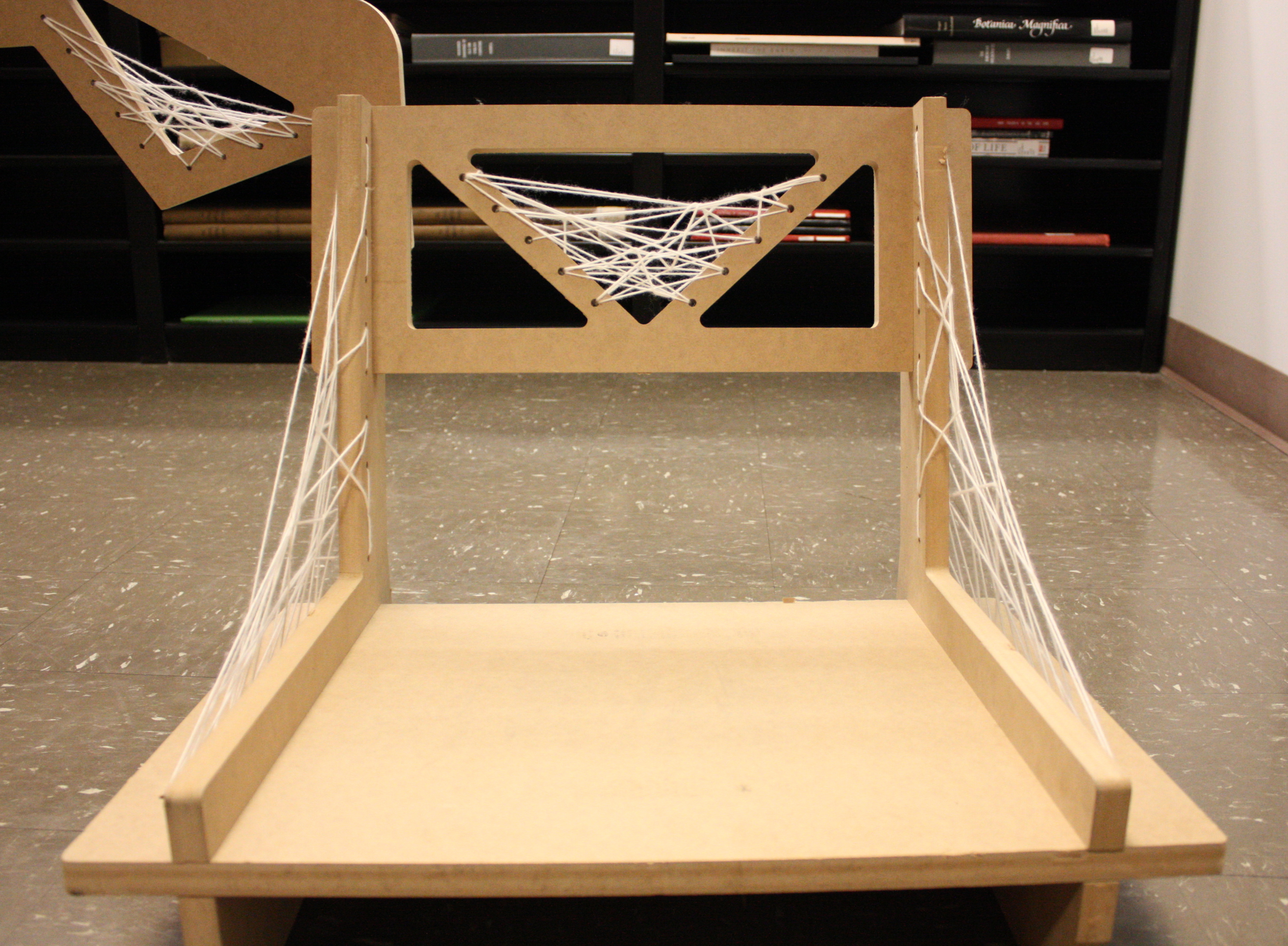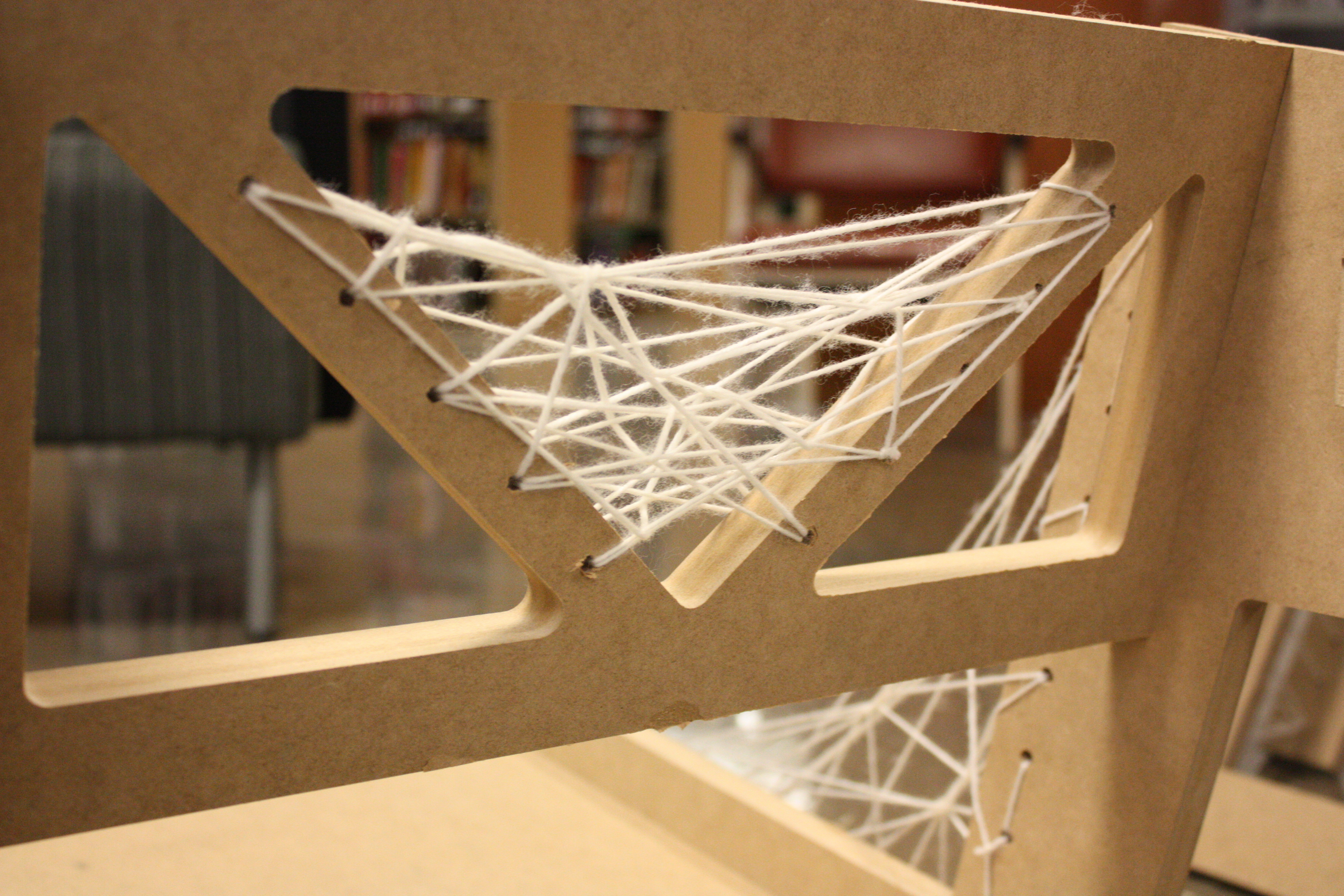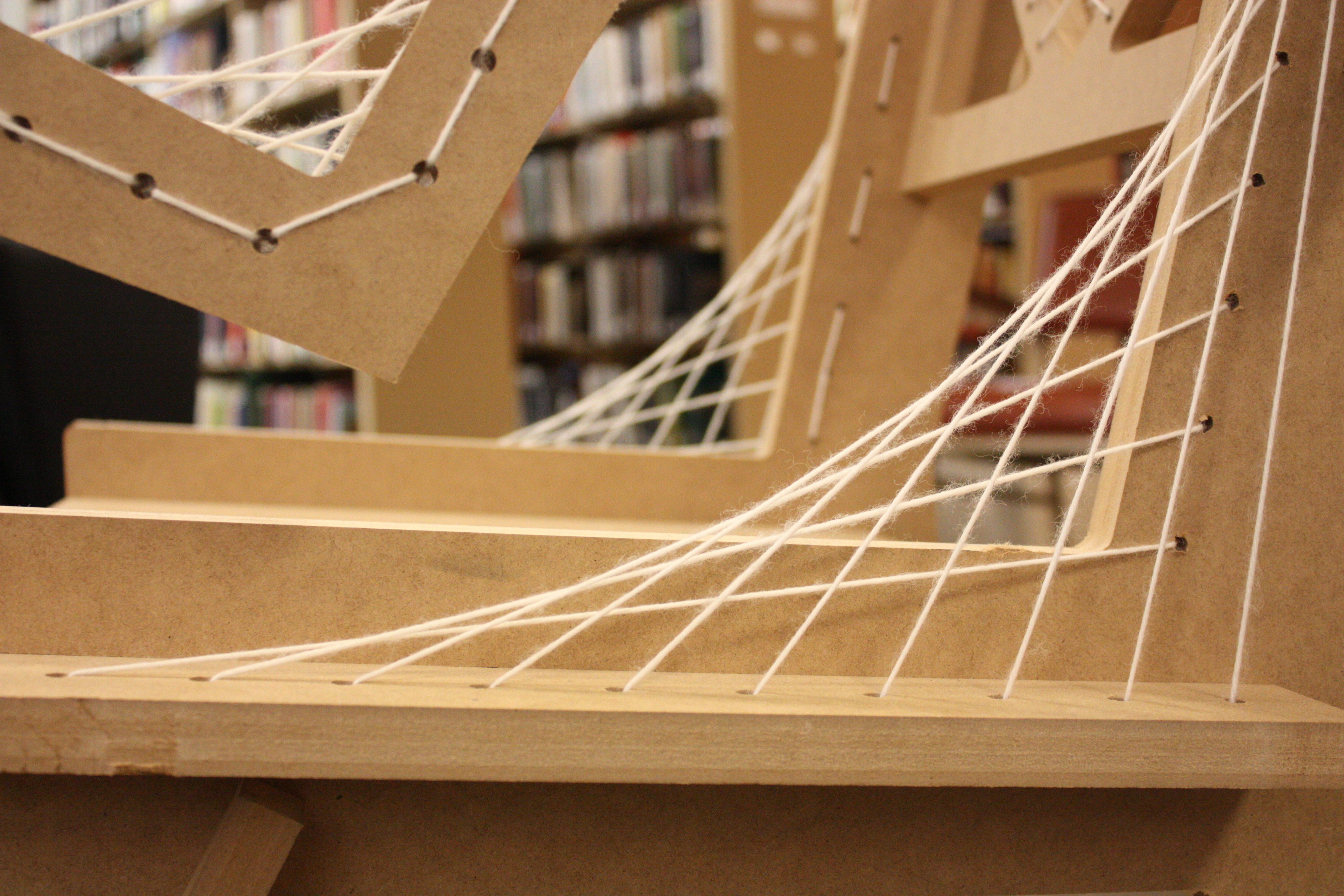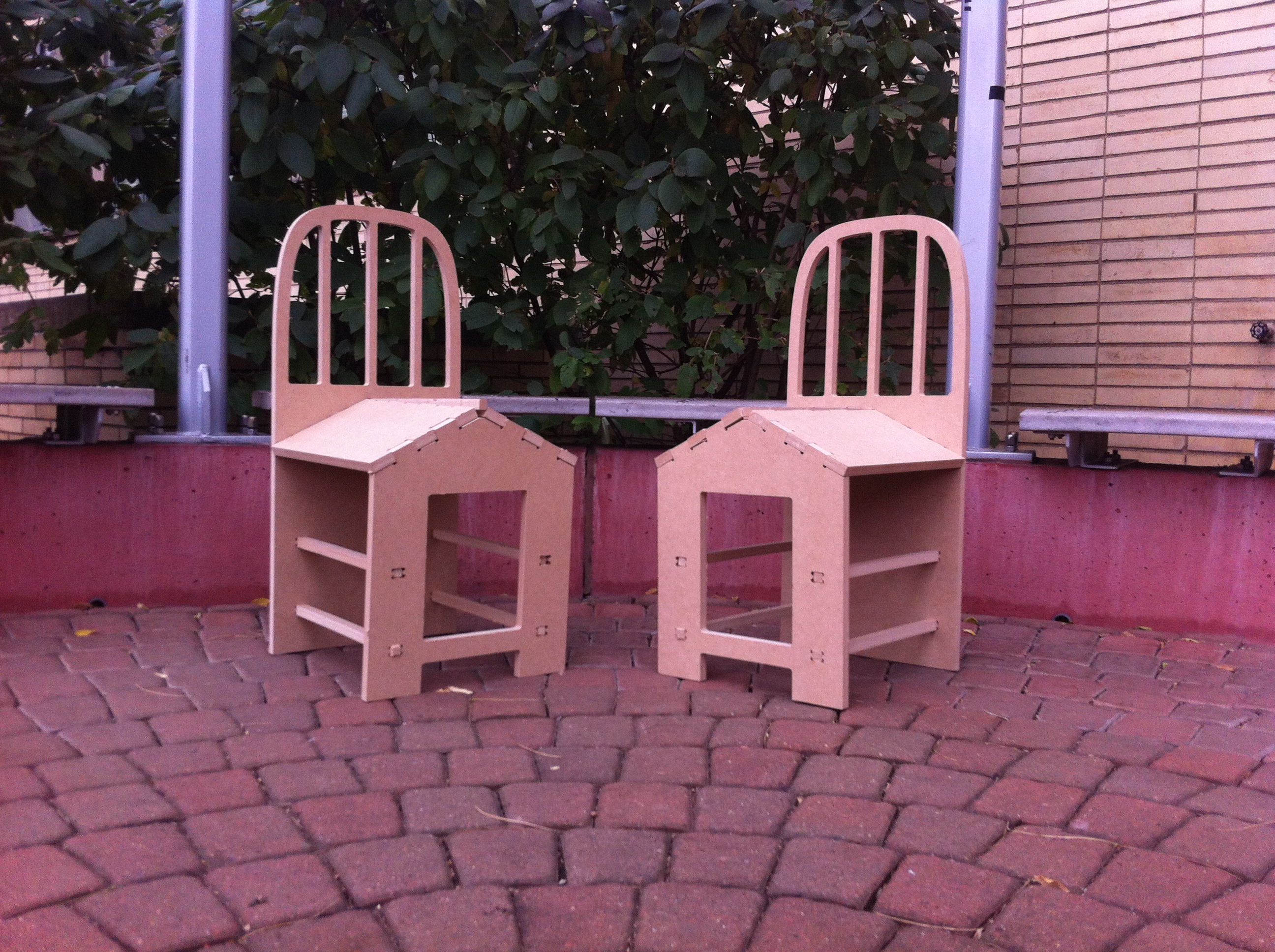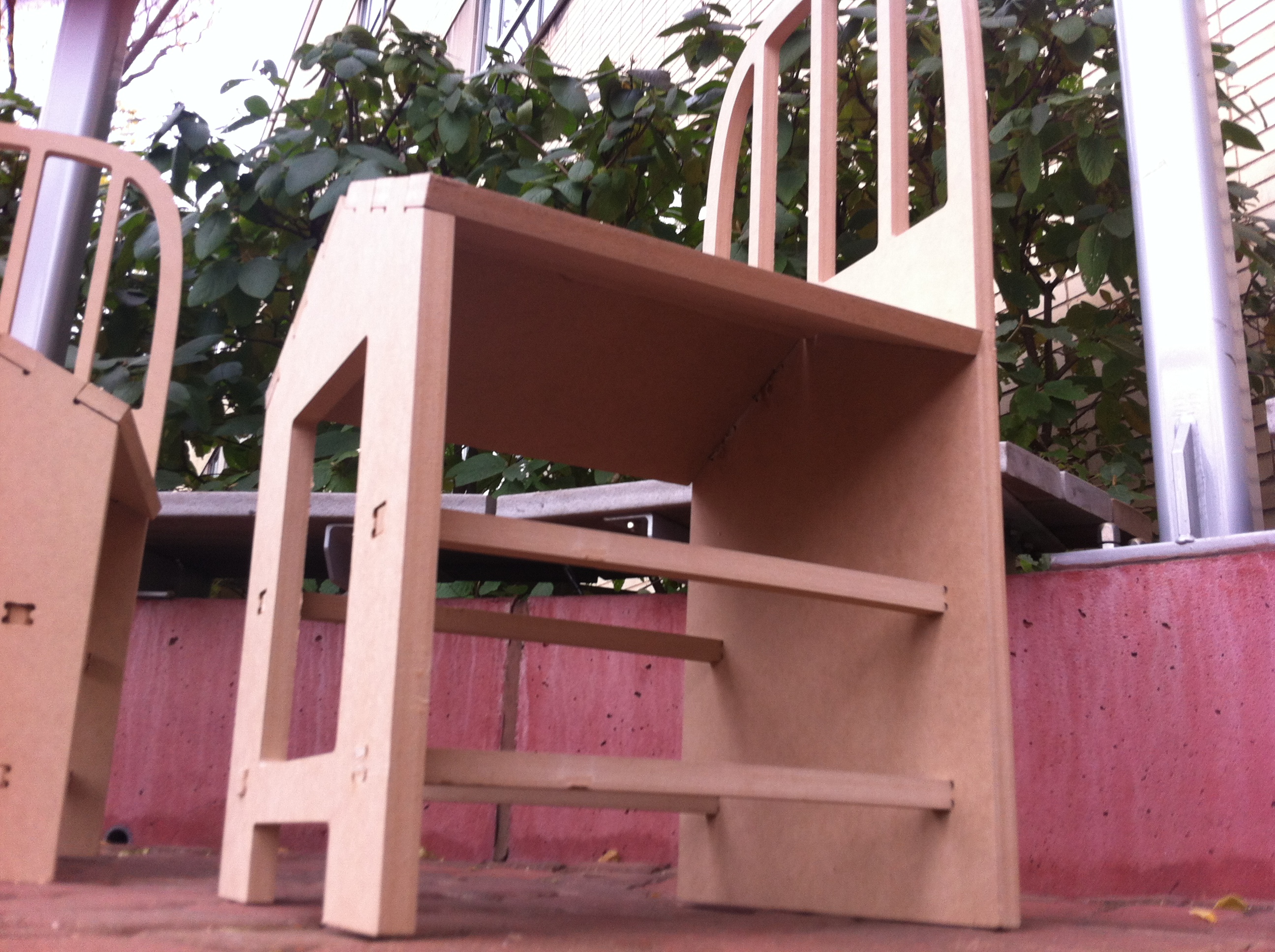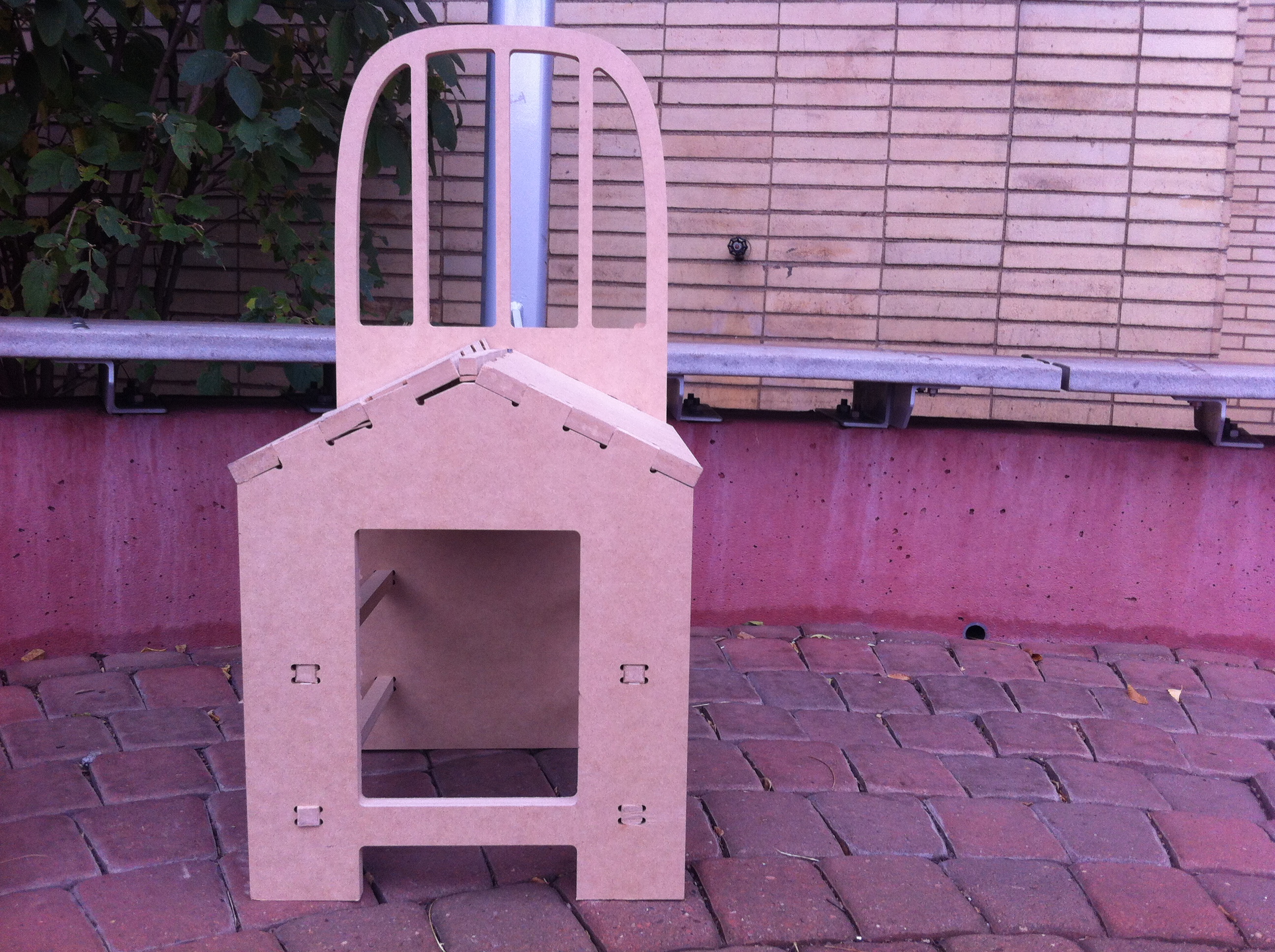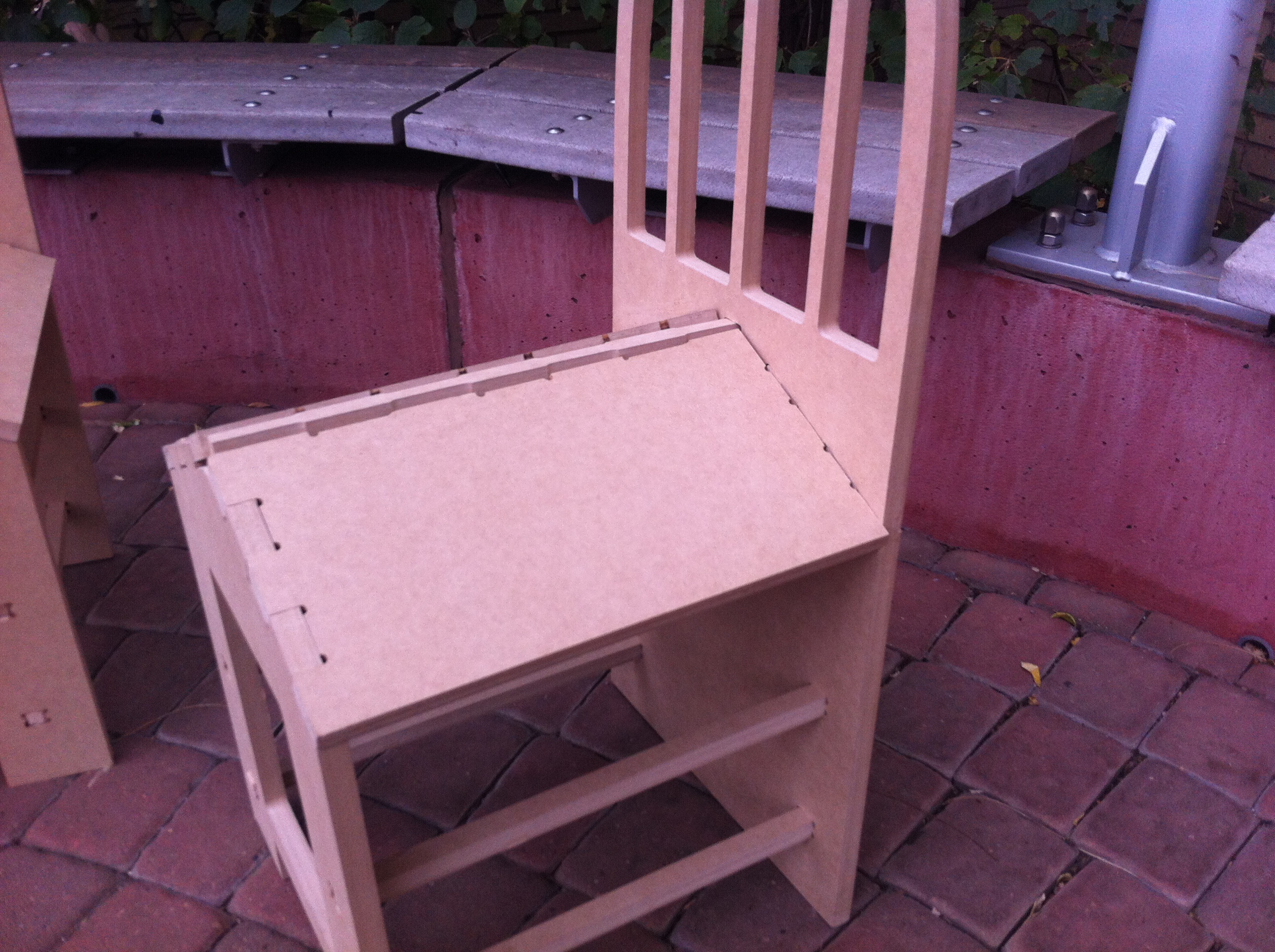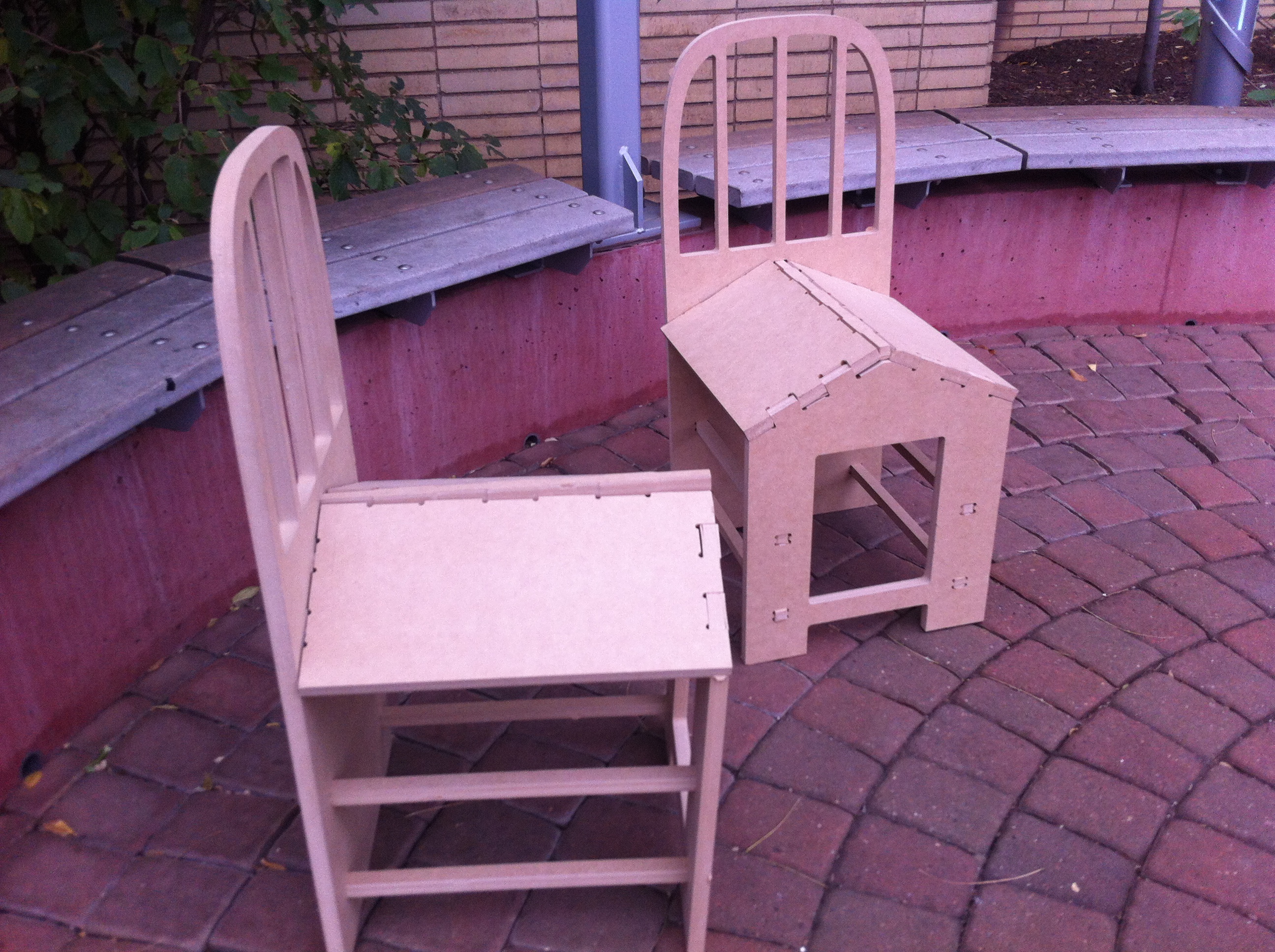My chair is a conversation between Brutus and Caesar. I wanted to more tell the story of Caesar and Brutus’s friendship. Caesar trusted Brutus, but Brutus betrayed Caesar by stabbing him in the back, literally. I also wanted to show how the mob in the play gave Julius and Brutus the power by holding them up.
Two Chairs/Conversation Part 2: “Body Talk” by Maryyann Landlord (2013)
“Body Talk” describes an interaction between two dancers. I think that dance represents a form of expressing your thoughts and feelings similar to how a conversation would. I chose the marble floor because it reminded me of the floors in fancy palaces, where they would hold ballroom dances. The reflective surface creates a lightness for the chairs, much like it would for two dancers.
Two Chairs/Conversation Part 2: “Melting of the Minds” by Lauren Valley (2013)
“Melting of the Minds” features a conversation between a mentally unstable man and his eight year old daughter. For this piece, I chose to focus more on the internal elements of the characters rather than on their obvious external features (ex. flowers representing the daughter, or tethers indicative of a strait jacket for the father); instead, I chose what I thought to be a good display of their internal structures.
The daughter’s egg-shaped chair was made to symbolize her youth and purity along with her withholding of judgement of her father’s condition. On the other hand, the father’s chair was created using more broken lines and cage-like elements, showing how even though his body is bound, the father’s mind is free (shown by some of the loose spinal elements holding the chair together).
The pictures above tell a story within itself of a reunion between the father and the daughter.
Two Chairs and a Conversation pt 2: “give up.” by Will Taylor (2013)
Figure 1
(Conversation between Humans + Environment)
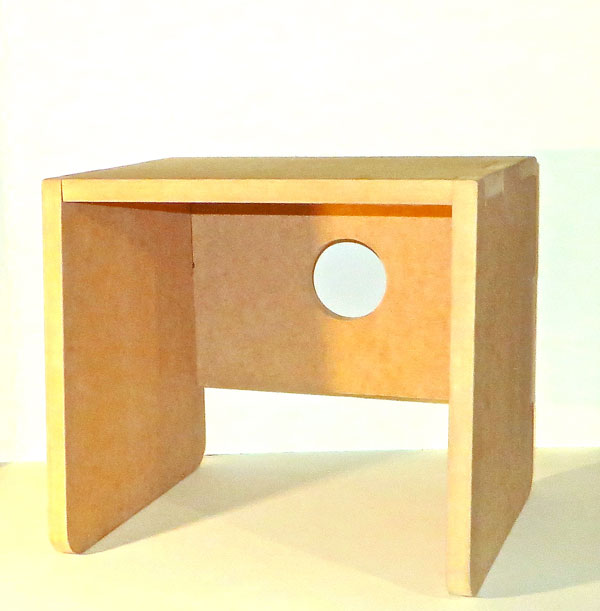
My goal for this project was to examine human interactions within a predetermined space. I chose my dorm room for this environment, because participants would be familiar with the layout, but not the contents of the room. For this experiment, I examined three males and three females interactions with the space. The general demographics were “Educated young adults with a mixed range of diversities.” None of the participants had perviously seen the stool. This experiment would require them to imagine what the object might look like as they searched.
Before letting participants into the room, I explained the rules of the examination:
1.) You are given an unlimited amount of time to find the two stools hidden in this room.
2.) The stools may be hidden anywhere in the room.
3.) You may give up at any time.
As soon as a participant entered the room, I began a timer and documented all movements within the space. I recorded how long it took for each participant to find one stool and how long it would take for them to give up on finding the second. Additionally, I would quote the subject when they would opt to stop the test. I made a stylistic choice not to paint the stool that was to be hidden in the room. I found that that natural color of MDF allowed the stool to blend with my wooden dresser, on top of which the object would be hidden.
Figure 1 Analysis:
Average time for participants to give up = 4:08.66 (min:sec.ms)
Average time for participants to find the first stool = 2:34.50
Objects most mistaken for stools: Coasters, bed-risers, shoe rack, stool decoy (box under blanket)
Location most visited by participants = Under the bed on the right side (further location-analysis available upon request)
All participants started the experiment on the right side of the room. One of my hypotheses is that they begin on the right side because it is my side of the room. However, I figure this decision might have also been affected by the direction the door opens or the fact that all participants were right handed. Testing in multiple environments would be necessary to pursue this finding.
At first, each participant was apprehensive about searching the room, commenting about how they felt uncomfortable going through my things. I found this interesting, because I explicitly told them they could search anywhere in the room. This got me thinking about the relationship between humans and their possessions. I’ve determined that, to some extent, humans have an intimate relationship with their things. That being said, the participants may have been uncomfortable disrupting this relationship by searching through my (and my room mate’s) belongings.
In this project I found an additional conversation at the end of each test, within participants’ closing statements. I have created a word cloud to illustrate this interaction.

Two Chairs/Conversation Part 2: “Relativity” by Natalie Moss (2013)
“Relativity” is inspired by the idea of a conversation between Albert Einstein and M. C. Escher about relativity. The chairs are constructed from the symbols of Einstein’s equation for special relativity (in the expanded form of E=MxCxC), are assembled in a manner reminiscent of Escher’s tessellations, and are displayed in a way inspired by Escher’s multi-perspective images. (For more detail, see the explanation in Two Chairs and a Conversation Part 1: “Relativity.”) This conversation interests me because it raises questions about what is true: according to both Einstein and Escher, a situation (event(s) + location) can be viewed in very different ways, and yet no one perspective is more valid than any other. I find this extraordinary. An individual’s perception of reality is limited to a single perspective. But all individuals see the world differently. As humans, we have a tendency to believe that our own way of looking at things is best. I think there is enormous potential in the realization that there are other frames of reference… and they may all be just as true as ours.
Thank you so much to Amanda and Zach for not only demonstrating my chairs’ frames of reference, but also for carrying said chairs to location in Gates. And then back again. You are both awesome. Thanks.
Two Chairs and a Conversation pt 2: Forced Partnership by Kaitlin Schaer (2013)
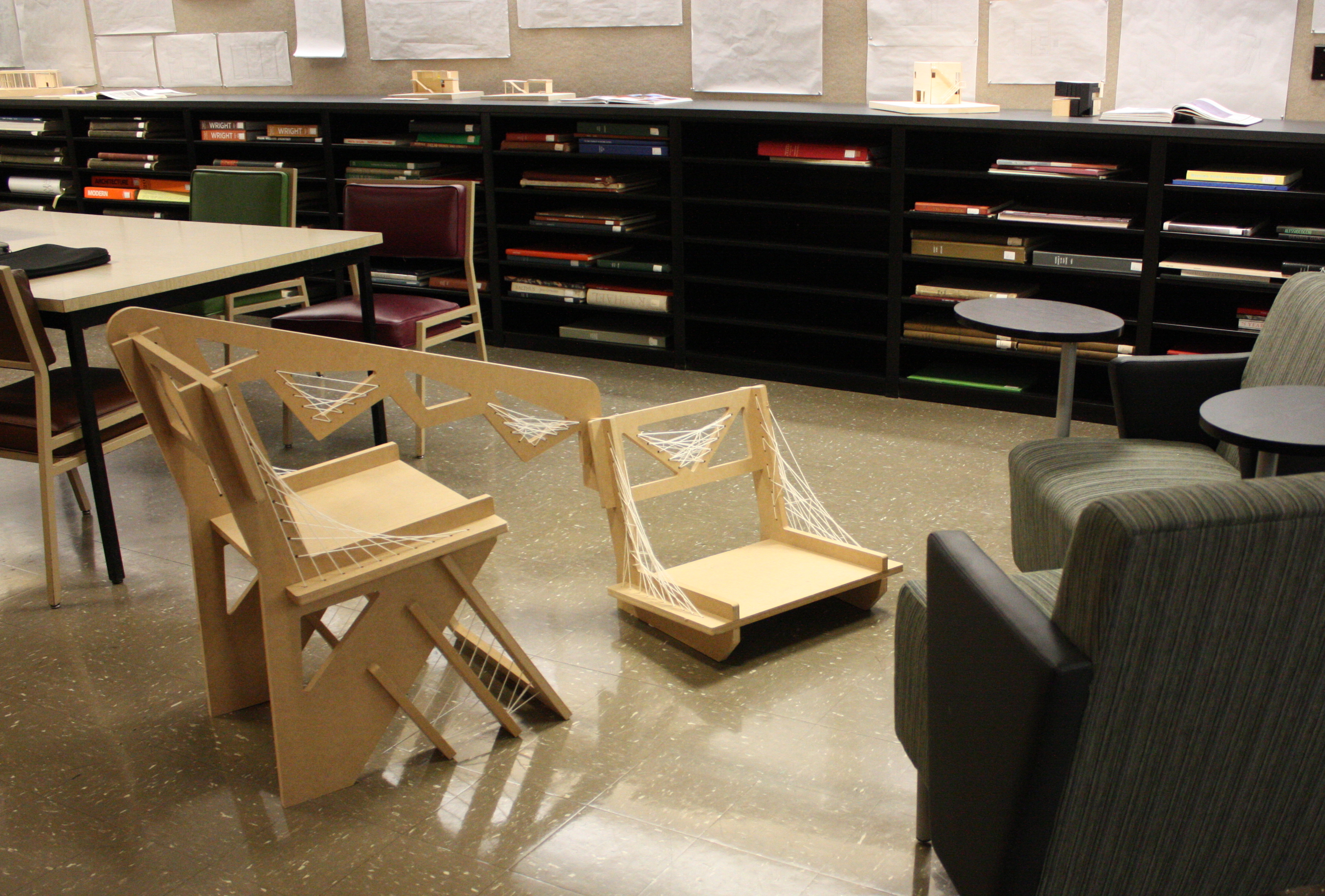
For this iteration of my “two chairs” project, I continued with my concept of a strained relationship between two students working on a project together. I have made several changes however: first, I did away with the small triangular pieces which were originally placed along many of the chairs’ edges. Second, to add interest to the chairs, I used drilling operations to create holes in the chairs through which I wove string, creating webs and curves reminiscent of suspension bridge structures. These references to architecture have lead me to become slightly more specific as to who I envision sitting in these chairs: I now see it as a conversation between two architecture students. Third, and related to this idea that this conversation is between architecture students, I have chosen an installation location that differs from my original plan. The chairs are now placed in the group workspace of Hunt library where many architectural models may be found. I chose to leave my chair unpainted with the bare MDF exposed to reference the architectural prototypes which are often made of similar material.
